CLAUDIA VANESSA PÉREZ LAMAS
Minister of Tourism of the State of Jalisco, Mexico
“The local and state governments recognise the importance of business events”
THINKING SKILLS CONTINUITY FOR ACHIEVEMENTS FACILITATE THE PROCESS
DYNAMICS THAT BENEFIT FROM SERENDIPITY KELLERMAN

No. 31 M Ay 2023 €19 / SEK 165
MEET WITH PURPOSE
Connect with Destination Canada Business Events team at IMEX Frankfurt, Booth C300
Innovation expertise across a range of sectors
Exceptional keynote speakers
Opportunities for enlightening technical tours
State-of-the-art convention facilities
Welcoming, accessible and diverse knowledge hubs


Loïc RomerTourisme Montréal Learn more at businesseventscanada.ca







Rotterdam Ahoy Convention Centre Bringing excitement to life
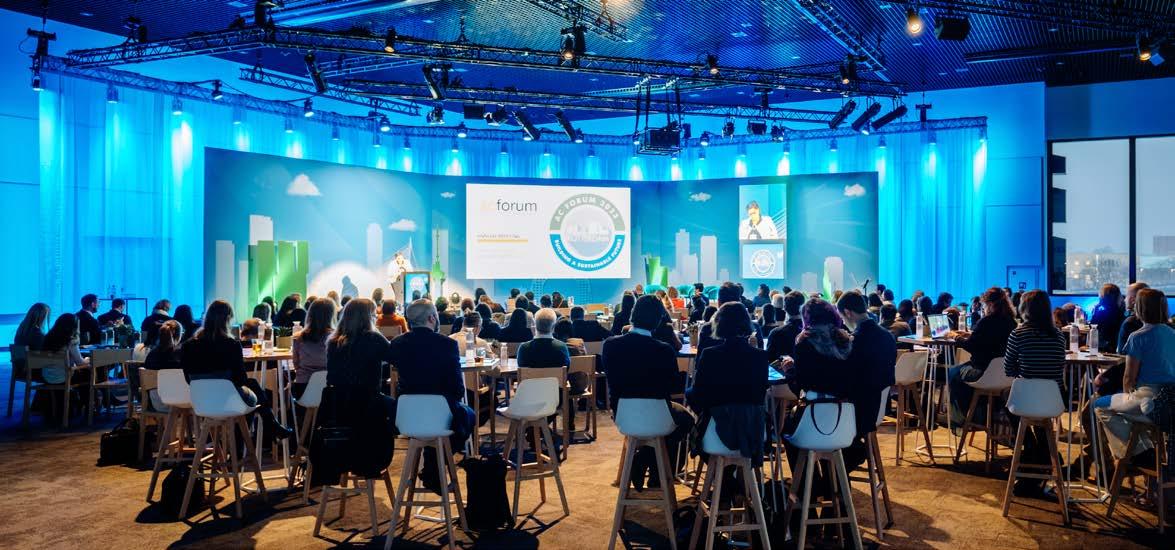
In addition to a podium for world stars, top athletes and major trade fairs, Rotterdam Ahoy also has a brand new Convention Centre: Rotterdam Ahoy Convention Centre (RACC). The stateof-the-art venue has 35 meeting rooms, an impressive auditorium (RTM Stage) with 2,800 seats, beautiful foyers and exhibition areas. RTM Stage can even be expanded to an XL variant for 4,400 people, making it the largest auditorium in the Netherlands.
The RACC is unique in its flexibility. The 35 very diverse rooms can be used separately or combined. This allows the RACC to create the ideal setting for small or largescale conferences. In addition, the RACC is directly connected to the Exhibition & Event Halls and the Ahoy Arena, so that the most diverse events and conventions can be realized.
Sustainability
and we are completely fossil-free. Moreover we are currently working on the installation of an Urban Water Buffer, making the city more resilient. You can read about this in our sustainability document: www.ahoy.nl/sustainability

Accessibility
At Rotterdam Ahoy, we live in the here and now but are constantly thinking about the future, a sustainable future. A future in a healthy, beautiful and green city. The RACC makes it easier for you to contribute to a sustainable future. We work on reducing greenhouse gas emissions (CO²), sustainable water use, recycling waste and so much more. For example our energy is 100 per cent sustainable
The RACC is easily accessible by car, bicycle and public transport. The Convention Centre is ideally located near the highway and bus and metro station, comfortably connected to the train station, that directly brings you to Brussels, London and Paris in a short amount of time. If you need to travel further, we have two International airports, Rotterdam The Hague Airport and Amsterdam Schiphol Airport which are only 25 and 50 minutes away. For travelling within the city we recommend using either public transport or a shared mobility initiative. Finally in Q3 2023, the Ibis Styles Rotterdam Ahoy (250 rooms) will open its doors, right on our doorstep.
Want to make a difference? We are excited to help you!
For more information, please visit our website: www.ahoy.nl/racc
SPONSORED CONTENT





10 Intelligence of Imagination
INTRO Atti Soenarso on whether Artificial Imagination is the latest and greatest invention or discussion in IT, or a decades-old concept.
12 The Importance of Business Events BUSINESS INTELLIGENCE Claudia Vanessa Pérez Lamas, Minister of Tourism of the State of Jalisco, on the importance of governmental recognition.
24 The Meetings Universe Is Evolving into the Multiverse STRATEGIC DEVELOPMENT Gustavo Staufert on taking proactive action on educational programs in a postpandemic change-accelerated world with new topics on the horizon.
28 Our Big Challenge Is to Continue Enlightening Our Visitors
9 QS Oceanographer Paulina Balbontin Durón puts the focus on sustainability, biodiversity and coastal management projects.
30 Business Events Are Essential to Share Experiences and Create Alliances
SMART CITY DEVELOPMENT Dr Victor M Larios uses design thinking and agile methodologies to accelerate technology transfer in living labs.
42 Designing for Good Meetings
GREAT DESIGN Designing a “good meeting” requires the insight and innovations found throughout the book Meetings, by Default or by Design
48 Getting Started the Right Way
FACILITATE THE PROCESS An excerpt from the book Meetings, by Default or by Design, conceived and written by Mike van der Vijver and Eric de Groot.
56 We Are Quickly Moving into a MultiMixed Reality
VISION CHANGE What is the future of meetings? Thomas de Ming argues that there simply is no future for meetings in their current structure.
68 How Artificial Intelligence and Machine Learning Will Redefine the Future of Business Events
MIND-BLOWING OPPORTUNITIES If you think the last few years have been head-spinning in this business, get ready for the supercharged next decade.
74 Our Coworker Jasper Sadly Lacks Soul and Proper Thinking Skills
KELLERMAN Roger Kellerman on being driven by desire and emotion where only our imagination limits what we can achieve. Can robots have fantasies?
LEGALLY RESPONSIBLE EDITOR IN CHIEF Atti Soenarso atti.soenarso@meetingsinternational.com
PUBLISHER Roger Kellerman roger.kellerman@meetingsinternational.com
GLOBAL SALES DIRECTOR Graham Jones graham.jones@meetingsinternational.com
TEXT Hans Gordon, Eric de Groot, Roger Kellerman, Thomas de Ming, Peshkov, Andrey Popov, Göran Rosenberg, Robin Sharma, Martin Sirk, Atti Soenarso, Scott Steinberg, Mike van der Vijver
PHOTOS / IMAGES Cesar Alvarez (incl. cover), Sara Appelgren, Rudy Balasko, Monica Espinoza, Pedro Eduardo Espinosa Garcia, Nick Harrison, Magnus Malmberg, Luis Portugal, Daniel Rasmussen, Atti Soenarso, Mark Strozier, Wanlee Prachyapanaprai, John Wildgoose
DESIGN KellermanDesign.com
EDITORIAL RAYS OF SUNSHINE Miss Tokio + Guadalajara + Jock Zonfrillo + Music by Igår + Athens
SUBSCRIPTION Subscribe at www.meetingsinternational.com or subscription@meetingsinternational.com
CONTACT Meetings International Publishing Betonggatan 1, SE-216 46 Limhamn, Sweden info@meetingsinternational.com www.meetingsinternational.com
PRINTING Exakta Print AB, Malmö 2023 [environmentally certified, ISO 14001]
PAPER Arctic Paper Munken Elk 100g + Multioffset 250g FSC labeled paper Cert No SGS-COC-1693 ISSN 1651- 9663
Facebook @MeetingsIntCom
LinkedIn @Meetings International
Instagram @meetingsinternational
Meetings International Publishing uses environmentally certified printing, paper and distribution
M AY 2023 I NSPIRATION I NBOUND
No. 31
Mark your calendar now for IMEX 2023




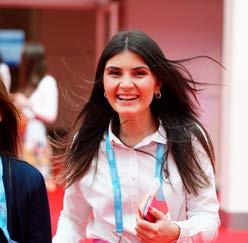

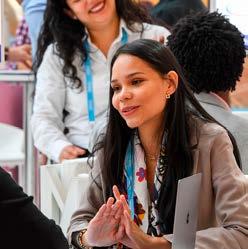






When reserves are low, hours are long and budgets are tight, you want maximum bang for your buck.
That’s what IMEX delivers. It’s the show where you can get all this done: Business Networking Learning
If you’re in the business of events, meetings or incentive programs, be they core to your company or something you do once a year, IMEX is the place to be.
Cost? No charge. Your ticket’s on us.
Value for money?
Let’s call it priceless.
Mark your calendar now for IMEX 2023
Listening Meeting Negotiating Planning Expanding Partnering Innovating Recruiting Launching
Intelligence OF IMAGINATION
Has the world of Artificial Intelligence (AI) changed our view of how the world will develop? AI can create art no one thought existed and can change the whole academic world because some students think it’s okay to put a word programme like Jasper AI or ChatGPT to write complete essays, and suddenly weeks of work can turn into 30 minutes of work.
It can already be hard for the academic world to know whether something in a paper was written by a student or a computer program, but then comes the following concept: Artificial Imagination.
Do you think Artificial Imagination is a new invention or discussion? Something the big IT companies have invented to be able to make even more money?
Because indeed, you have seen an absolute flow of conferences, congresses, colloquiums and other types of meetings that deal with AI and whether this field in our time of development is even suitable for humanity. Suppose AI is what will succeed society, and perhaps even wipe man off the face of the earth.
But in fact, Artificial Imagination is a technological evolution based on

the concepts of Imaginational Intelligence, that psychologist James Hillman wrote about as early as 1982 . As so often before, the latest and greatest new introduction in our everyday lives has been slowly cooking, offradar, for decades. To find out more about James Hillman, ask ChatGPT or any other AI client.
The concepts of Imaginational Intelligence itself can even be traced back to the philosophy of the ancient Egyptians, where the intelligence of imagination also was called the intelligence of the heart.
However, further research is needed on Artificial Imagination and its impact on business, business management, or computing in general and computer science in particular. But much of what we read is instead about fear and power. Will it affect business events within the foreseeable future?
We know today that advanced research says that AI and Artificial Imagination are emerging fields of work. Still, that research should show significantly more attention to business and computer development in connection with the dramatic effect of extensive data analysis, machine learning and Artificial Intelligence.
After several decades of studying the brain, scientists have finally started to understand where imagination comes from and how we can become even more creative.
“Imagination is more important than knowledge.” This quote comes from Albert Einstein, who was probably right. Intelligence is essential to bring about changes. But the ability to do so begins with thinking about and imagining ideas.
Imagination brings out ideas beyond the conventional, and intelligence is needed to give actual shape to them. So, imagination is more critical in the first place.
Imagination is the mind through which we encounter the world around us. The things we touch, see, read, feel, hear, etcetera merge into a mental “picture” in our imagination. Without this ability to imagine, we cannot develop an empathic ability to understand, or “walk in someone else’s shoes.”
The ‘I’ in AI may stand for Intelligence, but also Imagination. And you are still in charge of driving both.
Swedish-Indonesian Atti Soenarso has worked as a journalist for close to 40 years. She has worked for Scandinavia’s largest daily newspaper, was TV4's first travel editor, has written for many Swedish travel magazines and has had several international clients. She has travelled the length and breadth of the world and written about destinations, people and meetings.
10 | MEETINGS INTERNATIONAL N O . 31 2023
INTRO
PHOTO Magnus Malmberg
Boston. Where Memorable Meetings Become Historic Events


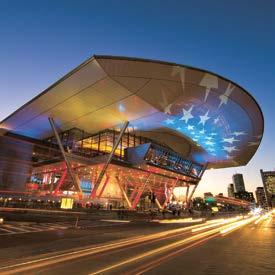
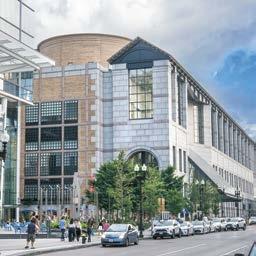
Boston leads the way in historic meetings, from colonists gathering for a tea party…to physicians witnessing the first use of ether…to Martin Luther King, Jr. meeting Coretta while at Boston University. Our revolutionary history continues today with conventions at the BCEC and the Hynes that feature the latest in technology, education, healthcare, finance, and more.



Schedule a site visit and make history with your own event. Call 877-393-3393 or visit SignatureBoston.com
Hosting Revolutionary Events for the 21st Century

C
PÉREZ LAMAS

CV
Cesar Alvarez
PHOTOS
Atti Soenarso
TEXT

Guadalajara , the capital of the Mexican state of Jalisco, has a long standing reputation in the meetings and events industry as a host of international conferences. Also, it is a destination of great importance in organising business events, exhibitions, and conventions nationally and internationally.
The Government of the State of Jalisco is working hand in hand with local governments, the Guadalajara Convention & Visitors Bureau, the Puerto Vallarta Tourism Board, Expo Guadalajara, the Puerto Vallarta International Convention Center, and the private sector to attract events of this type and to continue hosting business events.
“Strengthening tourism infrastructure will contribute to our vision of continuing to host worldclass events, with a commitment to promote events that generate a longterm positive impact on the destination,” says Claudia Vanessa Pérez Lamas, the Minister of Tourism of the State of Jalisco.
Until October 2021 , she worked as General Director of Evaluation and Monitoring at the Chief of Cabinet of the Government of the State of Jalisco.
Claudia Vanessa Pérez Lamas holds a master’s degree in Development Studies, with a specialisation in Economic Development and a subspeciality in Econometric Evaluation of Public Policies, from the Institute of Social Studies (Erasmus University) in The Hague, Netherlands. Also, she has a bachelor’s degree in Tourism Business Administration from the Universidad del Valle de Atemajac in Guadalajara.
For the last ten years, she has worked in the public sector at the
2023 N O . 31 MEETINGS INTERNATIONAL | 15 BUSINESS INTELLIGENCE
“ The business event segment creates more than 41,000 direct jobs in Jalisco”
three levels of government: in the Federal Government, in the Pro México offices in the United Kingdom as a Promoter of Exportable Supply, and in the State Government in Jalisco Business Development Fund as Coordinator of Institutional Outreach.
In the Municipal Government, Claudia Vanessa Pérez Lamas has served as Director of Investment Attraction and Employment Promotion, in the Center for Economic Promotion of Zapopan, and, later, in the Guadalajara Chief of Staff office as Advisor in Public Policy and Project Management.
In the Government of the State of Jalisco, she was responsible, from 2018 to 2021 , for the systematic monitoring of the government’s strategic projects.
The first project of the Evaluation and Monitoring Office was coordinating the redesign of the governmental structure, including creating a new model where all state ministries with substantive public policy functions are grouped into four coordinations.
With this background, Claudia Vanessa Pérez Lamas has seen the importance of developing business
events in Guadalajara for the universities, hospitals, key sectors, and Mexico.
“It is of utmost importance as the business event segment creates more than 41 ,000 direct jobs in Jalisco and produces a GDP of 1 ,826 million USD, representing 20 4 per cent of the total income of the tourism sector. Also, it is important to mention that Jalisco is the third state with the highest GDP in tourism.”
Claudia Vanessa Pérez Lamas says it is relevant to mention that the development of this type of events, as others pertaining to business meetings, contributes to the exchange of knowledge, technology, work models, best practices, and cohesion of the different sectors.
An example of this last point is that when educational events are held, there is a synergy between the participation of speakers, teachers, students, and volunteers and the educational content they generate and take from this kind of event.
In medical meetings, of the total number of national and international congresses won and confirmed in 2022 for Guadalajara, almost 20 per cent were medical congresses.

16 | MEETINGS INTERNATIONAL N O . 31 2023 BUSINESS INTELLIGENCE



“When we support events, we consider whether the committees implement sustainable actions ”
But do the universities and hospitals realise that they are essential knowledge drivers of meetings and events to create more business events in Guadalajara?
“Partially. For this reason, through the Guadalajara Convention Bureau, we have created an Ambassador Program where we recognise these leaders of different sectors. This programme has grown from having eight ambassadors in 2017 to having over 70 people today.”
According to Claudia Vanessa Pérez Lamas, politicians in Guadalajara, and Mexico, understand the potential for the State of Jalisco in business events. The city has a rich history of hosting meetings and events and is home to 61 venues, 22 arenas and stadiums. More than ten new hotels will arrive in the Guadalajara Metropolitan Area. By 2024 , there will be a total of 30,000 rooms to offer.
“The local and state governments recognise the importance of business events. Furthermore, we have the largest convention centre in México, Expo Guadalajara, where the Government is part of the board, and we
also operate the convention centre of Puerto Vallarta.”
Guadalajara Convention Bureau, together with the Tourism Trust of the Guadalajara Metropolitan Area, has helped to attract and provide extensive advice and support to, for example, congresses, fairs and exhibitions for over 50 years.
The Government has been part of multiple bidding teams and is a coorganiser of several business events. To mention some events that have been won: International Society for the Performing Arts Congress 2019, Congress of the International Society for Burn Injuries 2024 , and Gay Games 2023 .
The most important strategic question at the moment is a strategy for the Integration of Biodiversity in the Tourism Sector of the State of Jalisco. It was developed to establish lines of action to incorporate biodiversity as a central axis in tourism products and services. Jalisco is the first state in the country to have a specific strategy of this type.
The strategy has technical support and financing from the Adaptur project (ecosystembased Adaptation
2023 N O . 31 MEETINGS INTERNATIONAL | 19 BUSINESS INTELLIGENCE

“ The development of business events contributes to the exchange of knowledge, technology, work models, best practices, and cohesion of the different sectors ”
to Climate Change in the Tourism Sector) of the German Agency for International Cooperation and the French Agency for Development.
The axes of the strategy are :
Axis 1 Substantive Directly impacts so that biodiversity is maintained and protected, and sustainable tourism activities are carried out.
Axis 2 Coordination Actions of planning, diffusion, coordination, and arrangements of the public and private institutions in the different sectors.
Axis 3 Support Actions that enable the necessary conditions and attributions for an efficient implementation of the strategy and its evaluation.
Additionally: Three workshops were held in the municipalities of Guadalajara, Puerto Vallarta and Tapalpa, with the participation of government officials from the tourism, environment, and related sectors, as well as personnel from civil organisations, tourism companies and service providers, promoters, and academia, among other key stakeholders for the construction of the strategy.
“The State Committee for Sustainable and Regenerative Tourism in Natural Protected Areas and other Conservation Mechanisms was established. Also, support was provided to five sustainable tourism companies in the Biocultural Landscape. They were given a course on destination management, in which they developed a sustainable tourism action plan to implement it.”
On the question of what kind of initiatives Claudia Vanessa Pérez Lamas as a minister, can take regarding sustainability and business events, she answers:
“We operate or participate in four tourism trust funds, Puerto Vallarta, Guadalajara, Costalegre and the one for the other municipalities. Moreover, we take the media and influencers to know and write about ecotourism and sustainable products, for example, glamping, haciendas and the four seasons.”
Other initiatives are creating newsletters and managing interviews to talk about the products.
“We work with associations such as Adventure and Ecotourism Mexican Association to promote these products, and we promote these products on our social networks. And when we support events, we consider
whether the committees implement sustainable actions.”
The Ministry of Tourism participates in the Landscale project, a global project that seeks to incorporate best practices in the use of natural resources with the following objectives:
1. To promote the harmonious development of rural and agroindustrial productivity by preserving natural heritage and ensuring sustainability, equity, and justice in commercial and environmental relations.
2. To promote the sustainable management of ecosystems and their biodiversity, and the valuation of the goods and services provided by the natural heritage.
3. To promote the orderly use of the landscape and build collaborative relationships in favour of social wellbeing and improvements in the quality of life.
4. To promote the valuation of the local collective identity and cultural heritage making the landscape an exceptional territory.
5. To promote the governance and effective management of water with a watershed approach, considered a priority element for the sustenance of the landscape.
2023 N O . 31 MEETINGS INTERNATIONAL | 21 BUSINESS INTELLIGENCE
“ There is a synergy between the participation of speakers, teachers, students, and volunteers and the educational content they generate and take from this kind of events ”
It is currently being implemented in the municipalities of Tapalpa, Atemajac de Brizuela, Chiquilistlán and San Gabriel with the Ministry of Environment and Territorial Development and the Ministry of Agriculture and Rural Development. The Landscale project applies to the Sierra de Tapalpa, funded by USAID and promoted by Rainforest Alliance.
The tourism department’s main challenges regarding business events are the transformation of tourism towards sustainability and betting on events that leave a positive social and environmental footprint in the state.
“Moreover, other countries’ incentives exceed the amount of support we can give the organising committees, giving them an advantage over us. Also, with the disappearance of the Consejo de Promoción Turística de México, there is less support for tourism promotion at the international level, less support in crises, and, therefore, less opportunity to position destinations internationally.”
Since 2022 Guadalajara has been a member of the Best Cities Global Alliance, a network of twelve international business events destinations. The agreement extends the alliance into Latin America, expanding its worldwide footprint and furthering its aim
of promoting positive impact through business events.
“Joining the Best Cities Global Alliance will allow us to transfer knowledge with partners and clients, maximise profitability in international markets, address market needs, and partner with exceptional brands, among other things.
“As the only city in Latin America to be part of this alliance, we will provide a different vision as we also see a great opportunity in the learning and best practices we can obtain from other members.
“We are also expanding and modernising our two international airports in Guadalajara and Puerto Vallarta. Grupo Aeroportuario del Pacífico is contemplating an investment of 384 million Euro in the Puerto Vallarta airport and 820 million Euro for the Guadalajara airport.
“In 2023 , Grupo Aeroportuario del Pacífico expects passenger traffic in Guadalajara to increase between six and eight per cent and revenues to grow in the range of 12 to 14 per cent.
“In 2026 , we look forward to important international events such as the FIFA World Cup. This event put us in the spotlight, motivating us to raise our standards and continue innovating, looking for new things to offer.”
22 | MEETINGS INTERNATIONAL N O . 31 2023 BUSINESS INTELLIGENCE

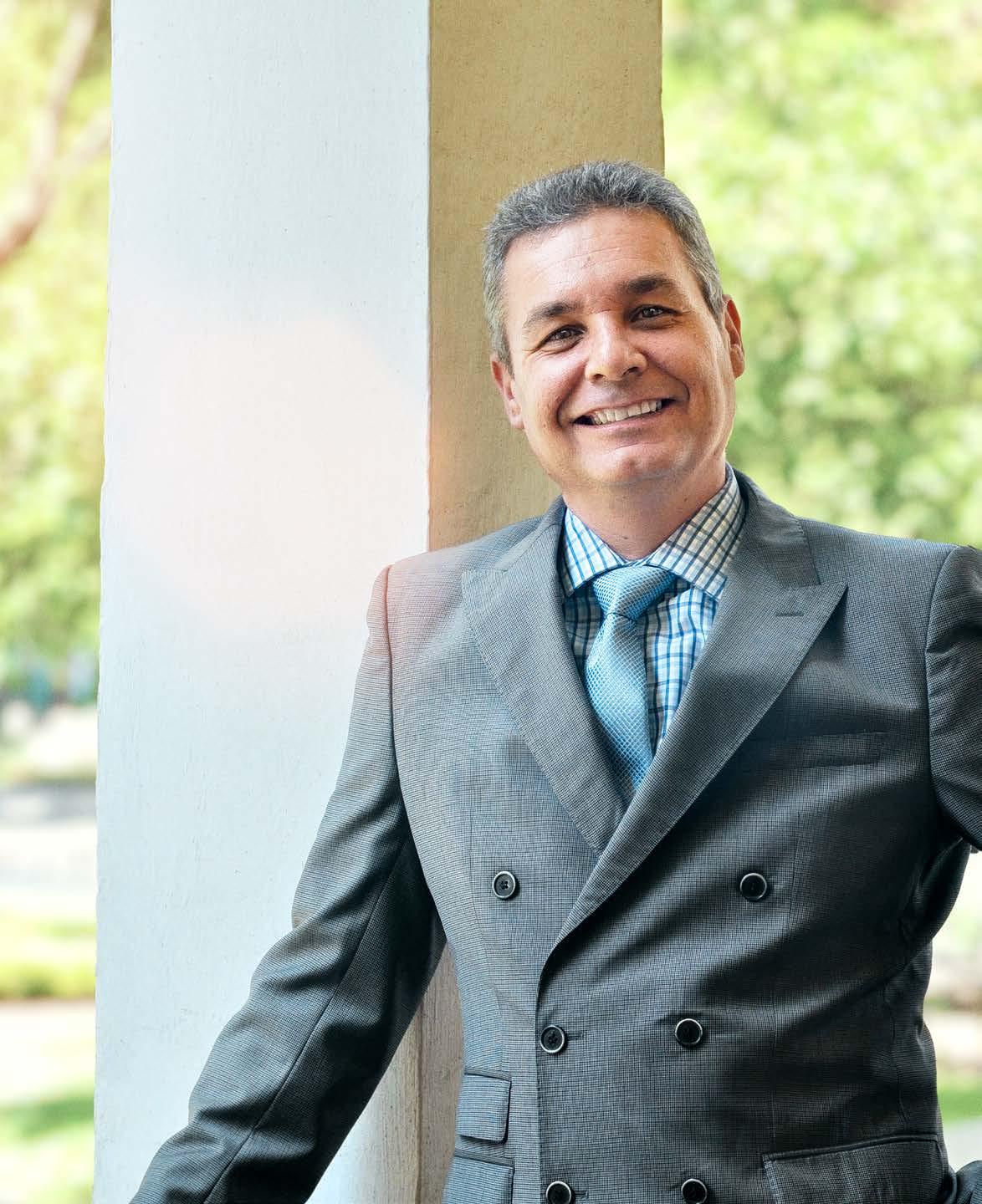
The Meetings Universe IS EVOLVING INTO THE MULTIVERSE
Guadalajara, in the state of Jalisco in western Mexico, is a contemporary meeting destination tempting many business events and international associations. The boom in the technology sector is boosting business events in the metropolis of Guadalajara, which holds over five million people.
For example, the city is the home of the Expo Guadalajara Convention & Exhibition Center, the biggest convention centre in Mexico, and the host of the world’s secondlargest Book Fair. The city presents itself as traditionally modern and is the latest Best Cities Global Alliance member.
After Sao Paulo in Brazil, the city’s exhibition centre is Latin America’s secondlargest event location. Apart from the pandemic years, the expo centre welcomes an average of 2 5 million guests to 200 events annually. Eight of Mexico’s largest trade shows are held on the grounds. In 2022 , Guadalajara hosted 50,000 meetings.
Information Technology (IT) is a primary industry in the city as Guadalajara is considered the Silicon Valley
of Mexico, with major companies such as HewlettPackard, IBM and Siemens based there.
Since the city decided to use its assets to secure more international meetings, academics, professors, researchers and leaders in several fields have been recruited by the Guadalajara Convention & Visitors Bureau and included in its Ambassador Program. Today 70 ambassadors are sharing their networks and knowledge.
The convention bureau was founded 50 years ago as the first in Latin America. Gustavo Staufert has been the CEO of the bureau since 2014 . He also holds the positions of Technical Secretary of the Tourism Trust of the Guadalajara Metropolitan Area, General Director of the Guadalajara–Guadalajara brand, Secretary of the Mexican Meetings Industry Council, as well as consisting of one of the 12 board members of the Best Cities Global Alliance.
Talking about the most important questions for the convention bureau, he says:
“How can they implement a rightful path to sustainable events? Sustainability has become an essential matter for humanity; therefore, it is nowadays an important section of the RFPs.
“As a Best Cities Global Alliance member, we are committed to a fast and correct implementation, but I want to create a programme that goes beyond carbon footprint measurements.”
According to Gustavo Staufert, three key legacies within the meetings and events industry must develop in the following years. Currently, they are debating the social benefit of meetings beyond enhancing the economy, which congresses and conventions could excel the public and private policies.
Questions discussed are: How can Guadalajara residents improve their quality of life by hosting certain events? And how may we improve knowledge, diversity and human rights?
“As an important player in our community, metropolitan area, state
2023 N O . 31 MEETINGS INTERNATIONAL | 25 STRATEGIC DEVELOPMENT
PHOTO Monica Espinoza
and country, for tourism in all segments, with a wide variety of public and private stakeholders, how can we set the proper boundaries? How far shall we get involved?”
Gustavo Staufert refers to an ongoing discussion in the association of the meetings and event industry regarding the new role of convention bureaux’ and the kind of leadership they should take.
“We are also talking about the advocacy the bureaux’ must perform among different stakeholders. Thus,
“Also, some remarkable deans are part of our Ambassador Program. That means they bring business leads to our attention; when these congresses materialise, some take place at university campuses.
“We should take more proactive action on educational programmes since some new topics have emerged after Covid19, and the meetings universe is evolving into a metaverse, or, shall I better say, the multiverse.”
On the question, are there any other institutions, organisations or
“ In 2022 , Guadalajara hosted 50,000 meetings ”
new responsibilities and job descriptions are about to be written, yet we should be careful in setting the rules bar.”
Twentyeight per cent of tourism income (GDP) in Guadalajara is related to business events. Last year the metropolitan area hosted 50,000 meetings, of which onethird were international. It shows how important the development of business events in Guadalajara is for the convention bureau as an organisation.
Worldwide, it is widely known that universities are important drivers of meetings and events, and the universities in Guadalajara are no exception.
“Some of the most relevant universities are members of our tourism observatory. The observatory board is where we analyse actual figures, and future strategies, such as employment, workforce, and education needs, are constant talking points among the agenda.
associations that are important for creating meetings and events where the convention bureau can be of any help, Gustavo Staufert answers:
“Yes, the Chamber of Commerce and Innovation ministry, not to say many of the sports associations and several IT associations. According to UNWTO, sports competitions do not fit the business events category. I couldn’t disagree more since, from my point of view, the behavioural is quite like a congress, with a significant added value: competitions help a destination to fill in the blanks in low seasons or low pick weekdaysweekends.
“On the other hand, worldwide competitions are longlasting events which also give paramount visibility to a destination.”
We are also talking about politicians in Mexico, Jalisco and Guadalajara. Do they see the potential for your city, state and country regarding
business events? Are there any differences between local and regional politicians compared to the Government?
“It is a neverending task. The meeting industry is less visible than we desire, and numbers fade among the different economic ratios. Hence, a reliable barometer must be in good shape and always at hand.
“I have learned that if I have the ROI and the future (good) consequences that will come with an event. If I present strong hard data, authorities and politicians are willing to give support and become advocates of the meeting industry.
“In Jalisco, we are more than glad about our fluid communication with our Government. We are team workers; perhaps that’s why we have such great results.”
We are moving on to discussing strategies. Which strategic question is the most essential for the convention bureau now?
“I guess they are almost the same worldwide: Legacy, sustainability, connectivity, differentiation.
“If we can play right those four topics, now that we are recognised as one of the most important convention bureaux’ in Latin America, we will continue to grow our business responsibly.”
Sustainability is one of the most critical questions in the meetings and events industry, not to say in the world. The GDSIndex is the leading sustainability benchmarking and improvement programme for destinations worldwide.
“Sustainability is indeed a strategic matter. We are currently working with GDS on Guadalajara’s Sustainability Manual and running our training campaign with the complete value chain.
“We decided to begin with one of our most traditional trade shows, the fashion show Intermoda. As we all
26 | MEETINGS INTERNATIONAL N O . 31 2023 STRATEGIC DEVELOPMENT
“ Rules of engagement will change, but engagement will prevail ”
know, fashion has not the best reputation in sustainability.
“Together with the fashion show owners, the convention centre and the convention bureau, we decided to turn this show into our first sustainable and legacy bearer trade show in Mexico. Intermoda will take place in summer with the new gimmicks and expositor sustainable manual.”
According to Gustavo Staufert, the convention bureau faces challenges. First of all, aligning interests and visions.
The board to whom Gustavo Staufert reports is diverse: State Government, three votes. Four Counties, one vote, but four voices. The hotel association has three votes, the tourism entrepreneurs two, and the Chamber of Commerce has one vote.
“Secondly, lack of interest and hurdle placement by the Federal Government. Regarding the meeting and event industry: The Federal tourism authorities have no initiative nor strategic plans for business events, as simple as that. Thirdly, staffing. After Covid19, we struggle to have enough people for job demand.”
Looking into the future, what will happen in five or ten years regarding meetings, conferences and events?
“My vision for the five to ten years is relatively simple. Opinions were coming and going on how the meeting industry would turn out after Covid.
“Many opinions were on the tenor of a requiem for business events. The truth is we went out of the crisis healthier and stronger, and people were eager to gather and meet facetoface. Nonetheless, many threats exist to overcome, for example, inflation, fuel prices, political radicalisation, and artificial intelligence.
“I think we’ll become socially, environmentally, and humanly responsible. People are mainly social, people need the touch and feel, which will remain unchanged, but many things will change in the process. Let me put it this way: Rules of engagement will change, but engagement will prevail.”
2023 N O . 31 MEETINGS INTERNATIONAL | 27 STRATEGIC DEVELOPMENT
 Paulina Balbontin Durón, CEO of Acuario Michin, Guadalajara:
Paulina Balbontin Durón, CEO of Acuario Michin, Guadalajara:
Our Big Challenge Is to Continue ENLIGHTENING OUR VISITORS
Paulina Balbontin Durón is an Oceanographer from the Autonomous University of Baja, California, Mexico, and has a European Joint Master’s Degree in Water and Coastal Management from the University of Plymouth, United Kingdom. She has over 15 years of experience in sustainability and coastal management projects.
Today Paulina Balbontin Durón, CEO at Acuario Michin, leads a team of an international class aquarium based in Mexico, focused on the mission to promote and inspire marine conservation.
She is responsible for the daily operation and strategic planning as budget, investment, sponsorships, human resources of 140 + employees, sales, and customer services. Which are the most critical questions for Acuario Michin at the moment?
“Are we inspiring people? Are we a model of nonformal education and entertainment? Are we contributing to society and conservation?”
How important is your work as an ambassador bringing business events to Guadalajara?
“Thanks to our excellent teamwork, we have brought the World Whale Conference, World Cetacean Alliance Congress 2023 , to Mexico. And Acuario Michin will host the International Aquarium Congress 2024 here in Guadalajara for the first time in Latin America, giving us international recognition as an aquarium. As for me, as a city ambassador in the environment, topics are great to
contribute as Jalisco is such a biodiverse city in nature and culture.”
What would you like to do regarding business events at Acuario Michin?
“Our only restriction is the space, we have had so many offers for big events, and our capacity is limited; as for the experience, I believe it is unique; it is a perfect place for icebreakers, to interact and not just host a dinner but an unusual experience.”
How important is the development of business events in Guadalajara for Acuario Michin as an organisation and at your city’s universities?
“Of course, it makes a difference to have cosmopolitan visitors that attend our facility. Many come for events and congresses and search for recreation and learning.”
Do the universities realise that they are the drivers of business events? Maybe, even the essential knowledge drivers to create more meetings in Guadalajara?
“Yes, there are people for every topic. Guadalajara is such a diverse city; it is modern and historic. As for Acuario Michin, we offer education and knowledge about marine biodiversity and our prehispanic cultures. People search for new things.”
Do politicians generally see the potential for your state’s developments regarding business events? Are there any differences between local and regional politicians compared to the Government?
“Yes, I have found that government and private sectors work together in many different subjects, especially for
leisure and tourism, which are key for events in the state. All the publicity that both sectors make is what has Jalisco going top as a State and as a Guadalajara City.”
What kind of initiatives can you, as the leader of Acuario Michin, take regarding sustainability and business events?
“Sustainability is a big pillar in our values and mission; most of our events are carried out with recycled materials. We have sustainable policies for event planners that host events in our facility. Responsible use of resources and recycled materials are the future of events.”
What are your most significant challenges?
“Our big challenge is to continue enlightening our visitors, continue educating by being fun, and to change people’s habits to sustainability.”
What will happen regarding business events in Acuario Michin and Guadalajara?
“I visualise Guadalajara growing as it is making very good things, choosing the right direction, making worldwide people like it, so I believe it is a great event destination. Acuario Michin is part of this city and its community, so our future is positive if we continue working together.
“Events need talented and proactive people to make a great experience, and I believe we can offer this in Guadalajara, Jalisco.”
2023 N O . 31 MEETINGS INTERNATIONAL | 29 9 QS
PHOTO Pedro Eduardo Espinosa Garcia

Business Events Are Essential TO SHARE EXPERIENCES AND CREATE ALLIANCES
Ever since April 2014 , Dr Victor M Larios has been the Smart Cities Innovation Center (SCIC) Director at the University of Guadalajara, Mexico, where he leads a group of researchers in Smart Cities and Information Technologies.
Also, he is a Professor at the Information Systems Department at the same university and one of the ambassadors in the Guadalajara Convention Bureau’s Ambassador Program.
The innovation centre is a thinkthank to help government, industry, and other academic partners to join efforts to improve the quality of life and social wellbeing within an urban environment by using technology as the core driver for transformation.
Victor M Larios’ primary research interests are Smart Cities, IoT Distributed Systems, Networking, Multiagent Systems, and Data Visualisation using Virtual Reality. He has ongoing collaborations in projects with the High Technology industry and government, using design thinking and agile methodologies
to accelerate technology transfer in living labs.
As an entrepreneur, Victor M Larios is the founder and Chief Information Officer (CIO) of the consulting company, Institute for the Development and Innovation in Smart Cities (IDI Smart Cities), which collaborates with Advion Solutions in Finland.
Its main activities are market research, promoting scholarships to develop local talent, and supporting international projects in Latin American countries and the European Union. One of its key efforts is to introduce the Circular Economic Model as a sustainability component for megacities, namely, the number of cities with over ten million people.
As a volunteer, Victor M Larios technically leads the Guadalajara smart city project for the Government, and international nongovernmental organisations, such as the IEEE, which stands for the Institute of Electrical and Electronics Engineers.
He has worked with Joel Myers, Chair of IEEE IoT Initiative for Smart Cities, for four years to develop the
“Internet of People” (IoP). It is a peoplecentric approach to connecting people within cities to build opportunities and growth on a business and social level.
In March 2020, the first IoP pilot project was launched by the Mexican State Government of Jalisco to support and incentivise local economies and communities in recovering from the Covid19 pandemic through the IoP cloud/mobile platform and a pioneering digital microcurrency called Hoozie.
Victor M Larios highlights some of the most important questions for Smart Cities in Guadalajara:
“We must understand that Smart Cities projects are one ecosystem integrating industry, government, citizens (over associations), and academy. For each particular challenge in a smart city, we need to see the opportunity of developing local innovation connected to what is already developed and succeed in other cities.
“The first question will be, among all the projects doing a balance at one year ending this Government
2023 N O . 31 MEETINGS INTERNATIONAL | 31 SMART CITY DEVELOPMENT
TEXT + PHOTO Atti Soenarso
administration, what is the balance among smart city projects and lessons learned to be shared? And the second question is, how do we better integrate our smart city ecosystem and connection outside to deal with the current challenges in the city?
“The second question is based on the understanding that Smart Cities are never achieved, and any achievement produces new require
Most of the funding is based on the Government, even since 2018 providing manual grants for research and local innovation for the smart city development.”
Victor M Larios says that even if the applied research grants were modest compared with other investments in technological projects from the State Government, they are an excellent practice to keep on the local
“ We need to be pragmatic and create events helping decision takers build the best strategies for cities ”
ments to connect solutions to the city’s different areas of services and infrastructures.”
Guadalajara is a metropolitan area with nine integrated municipalities. On June 24th, there are elections for the State Government and city administrations. A municipal administration lasts three years, and a state level has six years.
The mission of Growth Management Services (GMS) is to assist and guide local governments, state agencies, and others to manage growth and development, consistent with the Growth Management Act (GMA). The GMA was adopted to address ways to accommodate growth. The fastestgrowing cities and counties must complete comprehensive plans and development regulations to guide future growth.
“In the last ten years, multiple investments for the GMA Smart City have passed, but still, there is a need for better ecosystem integration.
innovation in transformación in the ecosystem. Traditional projects in the Growth Management Act were related to mobility, internet connectivity, healthcare, education, security, climate change mitigation, water, and energy management.
Since 2015 , Imeplan, as a decentralised government office, has been funded to coordinate projects, public policies, and actions equally in all municipalities connected in the GMA. Open data was one of the main goals and continued the tasks of this initiative. As a result, in 2021 , the manifesto for urban development in GMA was recognised by the United Nations as one of the five best city initiatives in the world in that year.
“We must state that GMA has a mature ecosystem of more than 600 companies dedicated to hightechnology activities with very active industry chambers in contact with the Government and academia. Besides, GMA is an important
educational hub with more than 20 universities, private and public, holding over 400,000 students.”
The University of Guadalajara is Mexico’s secondlargest high education institution, with 329,641 students, 17,800 professors, and 2 ,779 researchers. That allows for pushing for a solid local ecosystem with many international connections to support it.
“However, for the size of the ecosystem, it’s hard to connect all stakeholders effectively.”
How important is developing business events in Guadalajara for Smart Cities as an organisation and the university?
“It’s critical because the business models for Smart Cities are evolving, and the Government is not the only source of investment. With the promise of achieving solutions for cities driving their citizens to a better quality of life, many innovations, successful projects, and lessons learned are critical for Growth Management Act in other cities in Mexico and Latin America.
“We are moving from an era when big centralised infrastructures and engineering projects could solve most of the problems of cities. With the rapid urbanisation and vertical growth of cities’ land use, in cities with more than one million inhabitants, GMA is reaching almost six million, the need for decentralised solutions offers more resiliency and the ability to scale up.”
For example, to purify water in the city, the metropolitan area invested in a significant infrastructure in the past. However, with the fast urban development, moving the dark waters to only one point in the city is complex and costly. Hence, the new projects are more decentralised.
“Business events in Smart Cities allow for sharing and innovation
32 | MEETINGS INTERNATIONAL N O . 31 2023
SMART CITY DEVELOPMENT
“ We have no choice and not much time to become more sustainable in all our processes and styles of life if we want to have a future ”
in new processes and strategies by maintaining the economic sustainability of projects. Also, business events are essential to share experiences and create alliances among cities. For the universities, we need to place new educational requirements for the talentfacing cities projects. Smart Cities events are also a way to connect as part of the ecosystem.”
Victor M Larios says the universities realise they are natural drivers for events and meetings related to Smart Cities. In agreements with other universities worldwide, they create the flow of human resources ready to work in innovative city projects from all required fields.
Since Smart Cities are multidisciplinary, there is a need to train the talent to work in teams with the industry and government to get feedback on current challenges and use cases that can work.
“University facilities, with laboratories and auditoriums, become neutral spaces where event companies outside the campus are competitors. They can talk together to face common challenges in universities and even collaborate in programmes that benefit both parties.”
The Jalisco State Government has a ministry dedicated to innovation
and technology to support the hightech ecosystem since it represents a crucial economic sector.
This ministry connects to all other ministries and governmental offices to detect challenges and organise forums or meetings to help. Sometimes, municipal authorities are from a different party than the State Government. Still, thanks to the decentralised Office of Imeplan and the support of the various chambers of industry in the high technology sector, they converge and add from their side.
The main difference is related to budgets at the Jalisco State and municipalities; however, when there is sponsorship from industry to be involved in city projects, that can help to focus on organising events or workshops for the local ecosystem.
“For example, Guadalajara municipality is in the metropolis’s downtown; its main activity is related to tourism and services. However, surrounding Guadalajara, we have Zapopan, which has, like other municipalities, most of the high technology industry as its main activity, and that makes a difference in complementing Guadalajara activities.”
The answer to the question of which strategic question is the most
important at the moment, Victor M Larios says:
“With all the significant changes coming to improve cities, how Guadalajara Metropolitan Area Smart City Ecosystem is ready to face them correctly and learn from early adopters’ experiences.
“We are speaking, for example, about artificial intelligence, where with products such as ChatGPT, many services in the city can be improved. We also need to rethink all the jobs that could be replaced and where we can create new opportunities for those people losing their current jobs.
“And also became pragmatic with implementations, adoptions, and tropicalisation of technology to create and share our experience with the rest of Latin America. Or another example with the Digital Twins and its value for the industry, tourism, and being ready for the metaverses and all opportunities they are promising as a new step to access the internet and technology.”
Sustainability is one of the leading concerns when it comes to business events. What kind of initiatives can Victor M Larios take as a leader of Smart Cities?
“We are working on educating leaders for Circular Economies, and
2023 N O . 31 MEETINGS INTERNATIONAL | 33 SMART CITY DEVELOPMENT
“ We have a responsibility to help other cities share our good practices ”
this year, we are visiting the SITRA World Circular Economies Forum to get insights. With the climate change in the world and accelerated urbanisation, we have no choice and not much time to become more sustainable in all our processes and styles of life if we want to have a future.
“Events are essential, and we must create a local culture for sustainability. In Mexico, having successful cases, other cities will also move to Latin America. Multidisciplinary work is necessary, and all the ecosystems must be integrated for sustainability to create our path.”
Victor M Larios’s duties are facing some challenges. One of them is the current political situation.
“For particular reasons, the national science council is changing with current political situations. Also, locally, the State of Jalisco is closing its administration this year.
“Elections at the federal and state levels are coming in 2024 , and we must secure that new candidates’ agendas will prioritise Smart Cities and sustainability. Also, we need some continuity to projects.”
For that, they are working as a thinktank at the university to help publish tangible smart city projects
with local, national, and international experts on topics that the city needs to focus as water, transport, energy, education, healthcare, etcetera.
For the future, Victor M Larios says they are looking to strengthen the forthcoming government administration’s vision and roadmap for the Smart Cities projects with social impact and help the local industry evolve with the projects in new business models.
“Events such as workshops can help to produce those ecosystem roadmaps. But most important is continuity for achievements, new technology adoptions, and future critical investments in Smart Cities and their potential return in social and economic perspectives.
“Many cities in Latin America follows Guadalajara, so we have a responsibility to help other cities share our good practices. We use IEEE conferences and events, but we probably need to be more active in events for standards, participate in them, and create new alliances where we can contribute and learn to grow.
“Since the Smart Cities Innovation Centre is supposed to be a thinkthank, we need to work harder for local publications and be pragmatic
and create events helping decision takers build the best strategies for cities. And we are transversal with our core Information Technologies team but open to collaborating on a multidisciplinary level on each challenge that cities can face today.”
34 | MEETINGS INTERNATIONAL N O . 31 2023 SMART CITY DEVELOPMENT
Australian Business Events ASSOCIATION TO LAUNCH IN JULy

In the biggest shakeup of the business events association landscape in over a decade, the Association of Australian Convention Bureaux Inc (AACB), the Australian Convention Centres Group (ACCG), and the Exhibition & Events Association of Australasia Ltd (EEAA) have announced they have unified and will launch the Australian Business Events Association on 3 July.
A project development group of directors has led the work to spearhead the new association from the three associations. They have announced that the widely respected Peter King has been appointed as Independent Chair of the Board. He was most recently the CEO of the Melbourne Convention and Exhibition Centre.
The business events industry of Australia has called over many years to unify the sector. The most recent research conducted in 2022 revealed that 84 per cent of survey respondents wanted a unified body representing the sector to the Government and the broader business community.
It was deemed that the duplication of services from numerous associations resulted in inefficient use of industry funds, with multiple
advocacy voices creating confusion with stakeholders and diluting industry messaging.
“An industry of our size, scope and importance needed one solid and robust association to get traction on the issues that matter. A consolidated and united association can commission muchneeded research, create policy, train its people, tackle sustainability, develop career paths, link with international and domestic trade opportunities and powerfully advocate government,” says Peter King.
“The industry has been on the fringe of the Government’s radar for too long. Covid taught us that we must get serious about amplifying our collective voice.
“We are building a platform through which we can develop the outcomes and the impact the people and organisations who deliver approximately 480,000 business events annually need to thrive, create jobs, and contribute to the economy.
“We will focus on our pillars of advocacy, research and policy, industry development, the services members need to run their teams and businesses, and promoting the sector as a great place to work and do business.
“Ultimately, the Australian Business Events Association is about member prosperity, and when our members win, everyone benefits,” says Peter King.
The Australian Business Events Association membership categories are designed to ensure industry engagement is accessible to all, regardless of business size.
“We have designed our membership levels for the thousands of small businesses that are the engine room of our sector, as well as the large venues, destinations and corporates which play an equally important role.
“Everyone is equal at the table. Our State and Territory Chapters, sector groups and special interest committees will play a vital role in ensuring the issues around the country and within our different sectors will all be brought to the table.
“We have much to do as an industry but are united; we are stronger than ever. We are buoyed by the wonderful encouragement from all around the country and on both sides of the state and federal government,” says Peter King.
2023 N O . 31 MEETINGS INTERNATIONAL | 35 RADAR
Peter King, Independent Chair of the Board PHOTO Nick Harrison
YOU ARE HERE

 Hans Gordon, PhD, Associate Professor, Authorised Psychologist,
Aviation Psychology.
International.
Hans Gordon, PhD, Associate Professor, Authorised Psychologist,
Aviation Psychology.
International.
Introjection and Projection
A DELVE INTO IDENTIT y FORMATION
“Man as a species has survived by being divided into what I have called pseudo species. First, each horde or tribe, class and nation, but then also every religious association has become the human species, considering all the others a freakish and gratuitous invention of some irrelevant deity. To reinforce the illusion of being chosen, every tribe recognises a creativity, a creation of its own, a mythology, and later a history: thus, loyalty to a particular ecology and morality secured. One never quite knew how all the other tribes came to be, but since they did exist, they were at least useful as a screen of projection for the negative identities, which were the necessary, if most uncomfortable, counterparts of the positive ones. This projection, in conjunction with their territoriality, gave men a reason to slaughter one another in majorem gloriam.”
From the Prologue of Identity: Youth and Crisis
by Erik Homburger Erikson
2023 N O . 31 MEETINGS INTERNATIONAL | 37 PSYCHOLOGICAL MEETINGS
PHOTO Sara Appelgren
specialised in
Authorised psychotherapist, since 1987 running Gordon Consulting. Has for decades been engaged by airline companies, among them SAS and Thai Airways
IMAGE iStock.com/mstroz/Mark Strozier
Scientific research usually takes its starting point in some interesting phenomenon. Hypotheses are formed and investigated. If seen as tenable, they lead to theories. Based on these, new beliefs and counterhypotheses are formed, which are examined repeatedly to prove or reject the ideas. The most relevant research questions are: How the phenomenon arose, how it has developed, and what it has led to.
Below is a theory of some of man’s early psychological defences, so
baby; everything belongs to the child because there are no boundaries.
However, discovering that the universe is not boundless is not far away. The baby is removed from the mother’s skin; the strong scent disappears. The milk stops. The sounds and the tones from all the different voices change. The universal begins to fragment and crack in ways that can be perceived as startlingly threatening.
Can the newborn baby feel fear, even anxiety? Most likely, yes, although the term used by some
“One could define the immediate start of life as an autistic bubble or even a psychosis”
early that the individual who makes extensive use of them does so without knowing if they even exist. This, of course, also means you who are reading it now, and you have largely been a part of this as well.
Since the newborn infant has no structured experience of reality, everything flows through its biological sensors: the startling light, the strange sounds, all the cold and all the warmth, the painful and the soothing.
The child has moved from one universe to one completely different. Existence is sudden and intensively limited. One could define the immediate start of life as an autistic bubble or even a psychosis, a completely natural, total delusion that we all experience.
When the baby is gently placed at the mother’s breast, it inhales all the scents from the mother’s skin. The mouth is the infant’s main sensory outlet, and, as expected, the mother’s milk becomes another part of the
psychologists is existential despair. Gradually, the child is also overpowered by the experience of powerlessness. It could be devastating if the child were just left as if it were a thing placed in a box somewhere.
But usually, the important things return: the mother’s skin and breasts, with their warmth and primitive experiences of being the child’s belongings, usually provide organic calm. Life’s journey between Good and Evil has thus begun, a trip that is always complicated and not easily forced. In this context, it may be appropriate to point out that the many adults who tell us they had a snug, safe and strifefree upbringing only express their idealised memories.
We remember what we want to remember, despite not knowing how our early childhood was shaped and the immediate physical effects it gave rise to. Clear memories require relatively advanced neuropsychological
development, in which words and language must have begun to be established.
It gives the infant experiences of satisfied and frustrated desires to cope day after day. It would be next to impossible if not for the fact that the mother and other supplementary guardians (such as the father) undergo something similar.
The adorable little thing that seems to be smiling all day long is rarely in a constant mood, from the cute smile to the furious, painful scream; the sweetsmelling placid child to the kicking, flailing creature that defecates and urinates without warning.
The mother (along with other adult caregivers) is usually able to cope with and subdue these fragmented expressions; she holds the child more firmly in her arms and to her breasts, whereby it and the mother are united in what is called symbiosis; it works like a zipper when they knit closely with each other.
When this union is calm and most satisfying, the child activates an early, primitive defence mechanism, namely introjection. It means that even though the child cannot yet distinguish between yours and mine as most of its desires are dominated, it tries to devour and even more manifestly incorporate everything in its surroundings.
Above all, the mother’s breasts become the most soughtafter object. They are nutritious and comforting, and the child does what it can usurp them by incorporating them as natural parts of its own body.
Even most of everything that seems available outside the child is introjected. In a psychological sense, the child is, for a moment, in its universe, trying to protect itself from the harsher, colder, and more challenging sides of existence.
But eventually, the child is overpowered by hunger and its inner
38 | MEETINGS INTERNATIONAL N O . 31 2023
MEETINGS
PSYCHOLOGICAL
“ The many adults who tell us they had a snug, safe and strife free upbringing only express their idealised memories ”
bodily discomforts and pains. The contentment is replaced by a primitive physical rage that turns into a cascade of expressions: despairing screams, gushing tears, and cramped bodies.
Introjected parts that have become part of the child’s psyche must be thrown out. The breasts could be divided into one good and one evil. Many other things around the child, such as certain people’s odours and facial expressions, are a reminder that there is always the bad alongside the good.
Important point: because the child has introjected and digested most of what has come it is way, it quickly leads to immature fantasies that two or more different sides possess the child. It marks the beginning of an early “I” experience and the first step into psychological development. The second step quickly follows in a process dominated by a new psychological defence mechanism: projection
Briefly, it could be projectile vomiting of the parts within the child that it does not want to deal with as a means of distancing itself from them. The bad must go, the good must remain, and, if possible, expand. It is not very easy and requires collaboration with the surrounding adult world.
It usually finds expression in showing displeasure at certain aspects of things that flow over it: strong light from a lamp, cold air from
an open window, certain objects, people in the close circle, so also siblings and grandparents.
Thus, development also becomes a natural learning process: there are those others that you should avoid and keep at a distance. The adult world usually gives a good indication of the next defence mechanism to emerge, namely splitting
It takes place unconsciously, as such things usually do, and is expressed as a clear division between what is completely acceptable and what I would rather not have anything to do with. It could apply to everything from cultural and societal perceptions via the news media or objects of one kind to people and other living things.
Splitting and projection gradually become established tools, and it begins at the infant stage and becomes a lifelong process aimed at building a solid identity. Splitting enables me to create antagonism between us to project what I want to get rid of onto you. If there is no natural enemy or scapegoat in my immediate vicinity, I am not slow to invent one or several.
During early adolescence, anyone who deviates from behavioural and/ or appearance norms are suitable victims to put against the wall. On entry to higher education, freshmen face objectification in the form of derisive
comments. In working life, this kind of thing is legion.
I am a good person who wants well, which unfortunately cannot be said of you. Or do I see myself as stronger and more insightful than you, as you don’t seem to be made of the same stuff as me, and I keep a firm distance from such others? There may also be occasions where I take liberties to criticise you, beat you down, even wipe you out, all so that you will not be able to invade me again in my now clean interior.
Humans move daily in environments where introjections, splitting and projections are constantly used, and it also applies to our collective communities.
The collective categorises both itself and other collectives. We are not like you. In a milder form, the rest of you belong to another club and another team. In a sharper and more serious condition, you belong to another species, nation, or race.
You not only have another language and another culture, but you are also different. We put up barriers, and we will throw you out if you still need to get on the right side of these. If necessary, we’ll use the sharpshooter method and liquidate you.
Through these primary psychological defences, we build social constructions that form social identifications that lead to something we all need and long for a reasonably stable identity.
2023 N O . 31 MEETINGS INTERNATIONAL | 39 PSYCHOLOGICAL MEETINGS

Copenhagen CVB Launches RISK ASSESSMENT PROJECT
What risks do international associations and local suppliers experience when organising a congress? How can the global meetings industry move towards a more balanced approach to risksharing management?
Recent international developments and challenges, such as Covid19, have uncovered several risk scenarios for planning and hosting large congresses and events. While international associations and local suppliers are keen to minimise the risks linked to organising these events, they will likely have different views and taxonomy on the risks, leading to a challenging business environment.
Copenhagen Convention Bureau has launched a new risk assessment project to help build the bridge between buyers and suppliers to understand better the risks that each group experiences.
The project seeks to uncover and map the primary risks of planning
and executing international congresses and meetings and explore best practices, mitigation measures, and recommendations.
The mapping will be done through desk research, surveys, and interviews, and the convention bureau will then map the primary risks for each stakeholder group.
Until now, there has been limited knowledge about potential risks and sharing experiences and best practices in an international meeting context.
By launching the project, the convention bureau hopes to gain new insight that can be shared with its stakeholders and partners to improve the overall experience for associations and suppliers in connection with congresses held in Copenhagen.
“The urgent need for a better, mutual understanding of what risk is to one another in the international meetings ecosystem will hopefully lead to a stronger twoway
communication on the subject and us all doing better business together,” says Bettina Reventlow-Mourier, Deputy Director of Conventions at Wonderful Copenhagen.
“We hope the project will inspire and create awareness of risk on an organisational level and generate new thoughts and perspectives that will benefit future industry collaborations.”
Copenhagen Convention Bureau works closely with several selected national and international stakeholder groups, including leading industry organisations and associations such as ESAE, ICCA, PCMA, IAPCO, and AIPC. Consultants Karen Bolinger, Mayvin Global, MI Global Partner, and Danish risk experts are helping conduct the project.
All the findings will be assembled in a final report, expected to be finished in June.
2023 N O . 31 MEETINGS INTERNATIONAL | 41 RADAR
PHOTO iStock.com/RudyBalasko

Designing for GOOD MEETINGS
TEXT
Martin Sirk
Great design gets under your skin. It’s this feeling that whatever this is, it was meant to be, it was crafted for me (or collectively for us), does what it’s for, and serves its purpose. We can spot shoddily designed clothing at a hundred paces, a poorly designed online user experience gives us visceral shudders and a functionally inept building swiftly becomes a laughing stock or source of communal shame.
Great design elicits an ancient feeling going back to the first time our ancestors grasped a perfectly knapped flint tool when our forebears gazed in awe at the dawnlit symmetry of Stonehenge or participated in ritual song and dance at prehistoric springtime ceremonies. We instinctively recognise great design when we see, touch, and experience it: we’re genetically hardwired and culturally
reinforced design nerds, individually and collectively.
You know when you’ve attended a great meeting: an event designed to solve significant problems, where you and your fellow delegates feel involved and important: that creates a positive environment and makes it easy to interact with strangers, where you feel stimulated with fresh insights and where your perceptions are challenged; from which you return knowing what to do next to advance your career, your business, your research projects, or a societal mission, where you leave feeling simultaneously energised and exhausted.
But the default is that most meetings we attend are not particularly welldesigned. We have all suffered in identikit hotel ballrooms through hours of predictable PowerPoint
2023 N O . 31 MEETINGS INTERNATIONAL | 43 GREAT DESIGN
PHOTO iStock.com/John Wildgoose
presentations or hypermotivational keynotes from which we remember almost nothing of value.
We spend most of our time with the people we already know; we listen passively as corporate change management initiatives are rolled out repetitively by the same old faces.
There’s generally a decent party somewhere in the mix (but the music is usually too loud to talk), and when it’s over, the best we can say is that
packages. Many city marketing organisations still think about aggregated bed nights, not impact and outcomes.
Technical suppliers rigorously follow technical specifications; social programme designers follow narrowly defined RFPs. Few suppliers have questions such as “What are your delegates’ objectives for attending?” or “What feelings are you trying to elicit during this part of the programme?”
“ The biggest work mega-trend has to be remote working ”
programmes that offer little help in delivering useful results.
Instead, they all too often attempt to make the best of a poor job, to find personalised solutions in the liminal spaces hidden away in the shadows of the official event proceedings.
And of course, now and then, often surprisingly, we are exposed to a brilliantly designed conference, which gives us the energy boost sufficient to bear the burden of the next halfdozen mediocre meeting experience.
If this sounds depressing and pessimistic, I should clarify that I am an eternal optimist by nature, especially regarding the future of meetings.
This optimism is fed by the knowledge that profound changes are emerging today in the worlds of work and education, and these will inevitably powerfully influence how meeting design evolves.
the buffet lunches were better than the previous year and that the meeting was “OK.”
Why is this so? In part, it’s because of the default ways our education and business models were organised over the second half of the 20 th century. Today’s meeting decisionmakers grew up with these models and too often think of them as universal or “natural”: theatre style and classroom style room setups and lecture and workshop formals that stem from topdown pedagogy and commandandcontrol corporate norms. Authority figures, experts and motivators, rule the roost, and delegates are there to absorb information and follow the centralised workflow. Standardisation is the norm.
It’s also because of the roles that meetings suppliers have cast for themselves. Venues offer standard room layouts for standard price
There is a reluctance amongst suppliers to initiate or engage in conversations about design concepts, event psychology, experimentation or desired outcomes, even though they are often in the best position to offer novel solutions and valuable outsider perspectives.
Perhaps even more crucially, we have not seen an uprising among delegates. No one would accept a mobile phone today with 30 minutes battery life that has to be carried slung over the shoulder; we would reject out of hand any child car seat that hasn’t been crashtested to destruction, and even icons like the Boeing 747 are now abandoned forever in the Mojave Desert, for designknowledge, designthinking and design solutions have moved on.
You would expect delegates to revolt at meetings that display a profound lack of imagination, with
Societal priorities are being reordered, values are being upended, and everywhere we look, the concept of ‘purpose’ is taking centre stage, whether in the motivation of young workers, the mission of corporations, or the relationships between citizens and their policymakers.
These megatrends cannot help but shape how we design and experience our meetings; they will be all the better.
The biggest work megatrend has to be remote working. Tools to support remote teams and asynchronous work are increasing, and the measured output is replacing excellent at office politics as the prime determinant of success. Life–work balance is becoming the top employee demand.
Corporate culture and relationships are the last being recognised as critical components of longterm success and organisational differentiation. When teams or entire workforces get together physically, a huge amount of intellectual effort is
44 | MEETINGS INTERNATIONAL N O . 31 2023 GREAT DESIGN
“
Life–work balance is becoming the top employee demand ”
expended to make that time as valuable as possible.
Design thinking and psychological awareness are shaping the emerging models, and meetings are becoming more integral to the overall organisational vision, not treated as a standalone activity.
More and more of the smartest, most progressive companies are embracing communityled models involving the management of the complex. Nonhierarchical networks of inhouse and external teams, suppliers, partners, clients and customers across dozens of countries. Delegates at an everincreasing proportion of corporate events won’t be ordered to attend, they will need to be enticed, and if that company’s meeting design doesn’t deliver what delegates need, they will simply vote with feet.
In education, collaboration and creative problemsolving and (at last) winning the struggle against rote learning and memorytesting. The champions of pedagogical models that prepared workers for the age of mass production are fighting a losing battle, and countries that are giving their young people the intellectual tools to be successful in the
digital age, from Estonia to Singapore, are being emulated by their competitors.
With talent now being so mobile, not shifting to this new educational mindset for countries, meeting owners, and individuals is a recipe for competitive obsolescence. This is the source of a new generation of delegates who refuse to accept oldfashioned ways of sharing, critically evaluating and creating knowledge.
We live through a golden age of association creation, accelerated mightily by the 2020 Covid19 pandemic lockdowns. Individuals who care passionately about a shared interest or challenge, whether that be scientific, businessrelated, or societal, have found each other online or started to build longterm communities, not least because, for the first time ever, there are scalable problemsolving and engagement tools, from Mural to Zoom.
But they wouldn’t think of describing themselves as “associations” and won’t be interested in the traditions and rituals of association general assemblies. Many are already moving from online to facetoface meetings. In doing so, they will bring their tools
and culture and community engagement models with them, which will help to revolutionise the association meetings sector.
Convention bureaux and city development agencies are increasingly talking about citizencentred marketing and economic development strategies, intending that the meetings they attract should be aligned with the goals expressed by their citizens:
More circular economic flows.
Better solutions for societal and environmental challenges.
Bringing in more investment for local institutions.
Transferring valuable knowhow and expertise where it’s needed on the ground.
If meetings cannot be designed to unlock these benefits, many destinations will not want to support attracting and hosting them. But this trend also creates a growing reservoir of strategic destination partners for those who do design impactful and purposedriven events.
We have a choice. We can wait for these megatrends to reshape the landscape of event experience gradually, or we can take action by
2023 N O . 31 MEETINGS INTERNATIONAL | 45 GREAT DESIGN
“ There is a reluctance amongst suppliers to initiate or engage in conversations about design concepts, event psychology, experimentation or desired outcomes ”
adopting the concepts, practices and overall philosophy found throughout the book Meetings, by Default or by Design written by Mike van der Vijver and Eric de Groot. Where to start? Ask these simple ten questions that go to the heart of how we design and evaluate our meetings.
1. Is this a good meeting? Does it deliver the company’s or associations’ objectives and those of the attending delegates?
2. Is this a good meeting? Does it pay vastly more attention to what’s going on inside delegates’ brains than what they put in their mouths at lunchtime?
3. Is this a good meeting? Do the positive outcomes dramatically outweigh the environmental impact of holding it?
4. Is this a good meeting? Does it resonate with and influence audiences beyond its duration and physical location?
5. Is this a good meeting? Does it facilitate understanding and respect between those from different cultures or holding different viewpoints?
6. Is this a good meeting? Does it add to the sum of new knowledge and wisdom in the world?
7. Is this a good meeting? Does it help to reduce the sum of superstition, prejudice, ignorance, and pseudoscientific nonsense in the world?
8. Is this a good meeting? Does it generate creative solutions for society’s most challenging problems?
9. Is this a good meeting? Was it fun or intellectually stimulating to attend?
10. Is this a good meeting? If not, why on earth did you decide to organise it, host it, or attend?
Designing a “good meeting” isn’t rocket science. Still, it does require a comprehensive toolkit of proven techniques and new ways of thinking about purpose and outcomes, context and environment, behaviour and beliefs.
Put simply; it requires the insight and innovations found throughout the book Meetings, by Default or by Design
46 | MEETINGS INTERNATIONAL N O . 31 2023 GREAT DESIGN

INTERMISSION Wind’s in the east mist comin’ in Like something is brewin’ about to begin Can’t put me finger on what lies in store But I feel what’s to happen all happened before Mary Poppins (1964) Saving Mr. Banks (2013)
on the book Mary Poppins (1934) by P. L. Travers.
Based
PHOTO Walt Disney Pictures

Getting Started the Right Way
This is an excerpt from the book Meetings, by Default or by Design , conceived and written by Mike van der Vijver and Eric de Groot . It is a workbook with 100 + upgrades and enhancements for all those who desire better meetings and events.
Summary
By default
Your organisation has decided to hold a meeting for a certain purpose and to achieve certain goals. One of the first things you do is put a team of people together who will organise it. This project team includes both content and productionfocused members. Their proposals and decisions for the programme come from their perceptions about content and execution, further shaped by the organisation’s leaders, sometimes an advisory committee and satisfaction surveys.
What you are missing
The programme aims to achieve the stated objectives through the mindset of the project team. However, because it is based for the most part on input from the project team, it falls short on the participant perspective.
Input from participants adds essential insights into the ways in which the meeting and its
participants must achieve the goals. It also provides the organisers insights into the participants’ own objectives for the meeting. Good meeting programmes incorporate both.
By design
Have someone conduct at least six indepth interviews with future participants. Ask the interviewees what they themselves want to get from the meeting as well as their views on organisational goals. Make sure the interviews are broad, open conversations. Once you start doing them, you should quickly extend the practice to all your meetings.
A giant leap forward is to organise sessions and whole meetings in which the content is entirely participantgenerated. Participants decide what is relevant to them about a certain topic. As an organiser, you step back and offer participants a simple process that helps them navigate the session, while you facilitate all the necessary support. That’s all.
2023 N O . 31 MEETINGS INTERNATIONAL | 49 FACILITATE THE PROCESS
PHOTO iStock.com/John Wildgoose
“ Make sure that thinking in terms of participant perspectives and participant outcomes becomes the new default in the way you create your events ”
Getting started the right way
Case: Global fine chemicals company, Amsterdam, the Netherlands
They’re all there: the CEO, the Head of Events, the Strategy Officer, the Head of Corporate Communications and a young, talented member of the events team.
Three questions are on the table: What is the experience the event should offer participants? Which behaviour should it strengthen? And consequently, which content is required?
The lean methodology helps these executives with an engineering background to do something they rarely need to: making soft skills and processes measurable and manageable.
At the end of the inception meeting, everyone knows what they’re up for. The CEO can now hand over the content of the event to his colleagues, and the event team can focus on organisational issues. Designing the programme is lightning fast. Three months later, participants experience the logic in the programme.
By default
The project team members are all smiles. Their enthusiasm almost
bursts out of the little room where they are holding their preparatory meeting. The board has just agreed with their proposal to go for an allstaff meeting! They have endorsed the objectives and cleared the budget. So now the team can speed ahead.
Typically, most meetings start with a project team that is going to make the meeting happen. Once the meeting is on the organisation’s radar, the project team needs to get started for real. It is the driving force and its ideas, finetuned with those of the managers or the board, will give shape to the event. They submit proposals of what needs to happen during the meeting to the ultimate decisionmakers or, in many cases, they actually make those decisions themselves.
The project team tends to consist of two kinds of people: those responsible for the content and those who do the practical things – the people who deliver operations and production. The latter are doers. They itch to get started. And in order to get started they need a blueprint of the programme and everything it implies. That way, they can get their hands dirty, draft a budget, start looking for a destination and a venue, etcetera.
The content people are also anxious for a programme blueprint; the
sooner the better is what they crave, as well. They need to worry about calls for papers, securing that hardtoget speaker, the number of parallel sessions, etcetera. From both sides, having a preliminary programme is a practical, necessary and legitimate requirement. It consists of the feasible merger between input from both halves of the project team: a good chunk of content and some sound, commonsense practical and logistical choices. That works to get going.
The project team’s enthusiasm translates into a lot of decisions about the meeting’s planning and its setup, often taken early on by the project team and based on their best assessment of everybody’s needs, desires, and goals.
What you are missing
All meetings exist to achieve something specific with, for and by participants. The organisers and the delegates both have their distinct expectations and goals. How well do these align in practice?
Just offering participants content in the form of information does not guarantee that the “something specific” will materialise. Neither does offering them a comfortable room, delicious food, smooth transportation
50 | MEETINGS INTERNATIONAL N O . 31 2023
FACILITATE THE PROCESS
“ Input from participants adds essential insights into the ways in which the meeting and its participants must achieve the goals.”
or a fun, wellguided city tour. All of these are necessary, but none of them is a sufficient condition to obtain some kind of change to participants’ behaviour.
Behavioural psychology and neuropsychology conclusively show that more is needed to create this kind of change: content and the right circumstances must contribute to a process that creates a relevant emotional experience. It is the emotional experience that will bring about the change in the participant’s mind.
It follows that the default method of conceiving meeting programmes, centrally by a project team often in cooperation with a board of final decisionmakers, is risky to say the least. In fact, its central, topdown perspective risks missing out on the delegate perspective.
In order to offer participants a relevant emotional experience, you need to know a lot about them. You need to know what moves them, their present mindset and their specific perspective on the content, what keeps them awake at night, what they want to learn that is relevant to them, and how they can apply that learning in their daily lives.
Moreover, organisations, meeting delegates and the world around them
is in constant flux. To make sure your meeting has maximum relevance, you must adapt and align permanently and not just in the choice of your content. The exit surveys of the event’s previous edition provide little useful input in this regard. It is equally important to recalibrate your formats and the various ways in which you engage with delegates.
By relaying essentially on the perceptions of your project team and your decisionmakers about the programme, you miss the vital participant input which allows you to create exactly the right process and experiences for them. The process that will make your event truly worth their while.
And you know what? If you ask them, most participants can’t wait to give you that perspective! For free!
By design
Do now! The solution is deceptively simple: you need to talk to participants to learn about their perspective, their needs, their expectations and you need to talk to them as soon as you begin preparing the meeting, very early in the preparation process.
Most project teams start from the assumption that they know what their participants are looking
for, often based on the satisfaction surveys collected during the previous edition of the event.
Our experience from over 20 years of talking to future participants when designing meeting programmes shows the contrary. Despite the organisers’ best efforts, participants always tell us things about the meeting that the organiser doesn’t know.
Because there is a snag. These talks with future participants must not be done by the project team itself. Ask an outsider to do it for you. The reason is that participants will tell an outside interviewer a more revealing story than they will tell you. Simply because the outsider has no vested interests, no hidden agenda, and no real or perceived hierarchical relationships. Also, a skilled outside interviewer will ask questions that you won’t, fresh, unbiased questions, from an outsider perspective, generating unforeseeable input.
Participant interviews work best when done early on. You should do them at the start of the process of meeting preparation. However, if you have an event for which the programme is already pretty much complete, you can still look for a specific session where you strengthen the participant perspective. Find some
2023 N O . 31 MEETINGS INTERNATIONAL | 51 FACILITATE THE PROCESS
“As an organiser, you step back and offer participants a simple process that helps them navigate the session, while you facilitate all the necessary support ”
people who you know will take a special interest in this session and have someone interview them. Use the outcomes to renew your speaker(s) briefing about the session.
In general, you must explicitly task the interviewer to test all the assumptions you yourself may have about the meeting: the reasons for having it, its objectives, its content, sensitive issues, etcetera.
The questions must zoom in on participants’ motivation to attend the event; what they need in order to show the desired behaviour changes and why they are not showing these behaviours already; about elephants in the room and about uncomfortable truths. What ensues is a highly empathic conversation which reveals what moves participants and what won’t.
Oh, and in case you are tempted, such an indepth interview has nothing in common with a preevent questionnaire or an email survey. So, don’t even think about it …
The next level You have decided to do the participant interviews once for your next event? For a minor meeting or for your flagship event? Good!
Now the next step is to do it each and every time. Make sure that
thinking in terms of participant perspectives and participant outcomes becomes the new default in the way you create your events. Maybe you are not entirely convinced that these participant interviews will produce useful input for your programme. Maybe you think that after so many years of experience, you know your participants inside out; that you know their lives and preferences as well as the contents of your own back pocket. In that case, our advice is: do them anyway!
Since the above is a bit of a nobrainer, let’s go beyond. How about a programme or a session that is entirely participantgenerated? This overturns traditional roles and responsibilities. It flips the process by which content is infused in the meeting.
The only thing you need at the start is a subject or topic, a process with steps that conduct the participants to an outcome and all the necessary support to get there. As an organiser, your role becomes that of facilitator of the process, and the participants themselves get to decide what they think is most relevant to them.
Viewed as a series of steps, the setup would be like this:
Choose the broad subject.
As an option, you may want to start with an inspiring introductory story.
Offer participants a process that helps them to define and then select their specific angle or subtopic.
Offer them the opportunity to have an exchange of thoughts, opinions, knowhow on their subtopic of choice (space and time).
Provide support: expert knowhow, facilitators, flip charts, coffee and tea, meals, etcetera.
Decide what is going to happen with the results.
Close the proceedings with some kind of exchange about the results.
Doing more than one session this way requires that you connect them in a logical and productive way.
This kind of session appeals strongly to participants’ intrinsic motivation to work with content. It prompts them to be inquisitive and to take responsibility for their own outcomes. Other big advantages include more creativity and a much greater likelihood of dynamics that benefit from serendipity.
52 | MEETINGS INTERNATIONAL N O . 31 2023 FACILITATE THE PROCESS

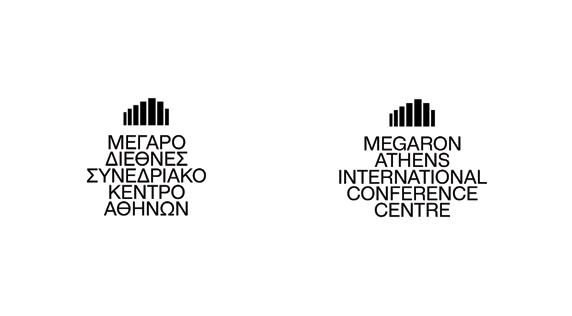
Travel and Tourism Cybersecurity JOBS GROW B y 54 PER CENT

The Covid pandemic profoundly impacted the travel and tourism industry, with the sector experiencing significant challenges. Despite the obstacles faced by the industry, the cybersecurity job postings managed to remain stable and even grew by an impressive 54 per cent yearonyear (YoY) in 2022
Industry analysis reveals that cybersecurity job postings in airlines, travel services and lodging rose by 82 , 58 and 56 per cent, respectively.
Some companies with sizeable job postings in cybersecurity in 2022 include The Walt Disney Co, Marriott International Inc, Southwest Airlines Co, Cathay Pacific Airways Ltd, Hyatt Hotels Corp, and The Emirates Group.
Job postings by companies in the cybersecurity space revolve around specific areas such as the Soar platform, aircraft network, threats and vulnerabilities, and cybersecurity incidents, among others.
For instance, The Walt Disney Co “Sr Security Engineer” role in the Enterprise Security Orchestration, Automation and Response (Soar)
team identifies new opportunities for process optimisation based on existing automation workflows and manual processes.
The team delivers the Soar platform as a service and automation playbook development to improve the efficiency and effectiveness of cyber security customers by building custom automation and orchestration workflows based on customer requirements.
Southwest Airlines Co’s “Cybersecurity Engineer, Aircraft Operations” role looks at building capabilities to protect Southwest’s aircraft and the systems that connect to the plane and providing security guidance to remediate security vulnerabilities, risk items, and policy exceptions.
Marriott International Inc’s “Cybersecurity, Sr Threat Analyst” role looks at assessing threats and vulnerabilities, developing mitigation plans to address potential threats, and supporting investigation analysis of cyber events.
Hyatt Hotels Corp’s “Analyst, Cyber Security Operations” role monitors Hyatt’s cyber security
infrastructure for signs of intrusion, handles the response to cyber security incidents, and provides suggestions for making Hyatt’s tools to detect signs of suspicious activity more effective.
The Emirates Group “Vice President Cybersecurity Defence” role looks at delivering the endtoend global cybersecurity incident detection, investigation, prevention, and response capabilities across Emirates Airlines, Dnata, and all group businesses for designing and implementing an international crisis management capability across the groups.
The growth in job postings indicates the travel and tourism industry’s increasing awareness of the importance of cybersecurity in the current digital landscape.
It also highlights the industry’s efforts to strengthen its security measures to ensure the safety and protection of its customers and business operations.
54 | MEETINGS INTERNATIONAL N O . 31 2023
RADAR IMAGE iStock.com/Peshkov
YOUR CONGRESS
YOUR CONGRESS

YOU MIGHT NOT REMEMBER DAYS. YOU REMEMBER MOMENTS.
YOU MIGHT NOT REMEMBER DAYS. YOU REMEMBER MOMENTS.
#LIKENOWHEREELSE
#LIKENOWHEREELSE
AT GRIMALDI FORUM MONACO
AT GRIMALDI FORUM MONACO
We Are Quickly Moving INTO A MULTI-MIXED REALIT y

TEXT
Thomas de Ming
What is the future of meetings?
My answer is: there is no future for meetings in their current structure.
We must refrain from using traditional meetings as the main building blocks in organising work if we are to navigate successfully in an increasingly hybrid and distributed existence. I am referring to the formally booked meetings that multiply in our activities.
In the new conditions, it does not matter that we learn to have better meetings (including meeting preparation, meeting forms, meeting management, meeting behaviours and meeting documentation) if the actual
way of organising communication has reached a bestbefore date.
There needs to be more than the old way of organising clerical work. We are quickly moving into a multimixed reality (also called a multiverse) where AI is integrated into everything we think and do. The demands then increase drastically for a much more synergistic interaction between both individuals and with different types of information.
Do I have data to back up what I claim? Yes, there is a lot of data. For example, Microsoft, which measures a lot through its services, shows that both perceived and actual
productivity decreases yearly while the number of meetings, emails, templates and measurements increases.
Why is that? A brief explanation of declining productivity is that more and more work becomes “official work” where the body is not used to exercise one’s profession. At the same time, the complexity of the activities increases, which in turn increases the requirement that more and more jobs become involved in more and more issues.
The tasks also become more abstract, with many using their days to handle text, symbols and representations of reality. In practice, the
56 | MEETINGS INTERNATIONAL N O . 31 2023
PHOTO iStock.com/AndreyPopov VISION CHANGE
“ There is no future for meetings in their current structure ”
work becomes so abstract that it feels like you are doing something concrete when you are in a meeting.
If you have been told that work is the same as meetings, you naturally book more meetings to cope with the increased complexity. In turn, it leads to even more meetings, especially when digitalisation has made it easier to book digital meetings.
The consequences of this old way of organising work, where formally booked meetings are one of the main activities of managers, project leaders and most employees in organisations, is that every issue you have to deal with takes up more and more time in the system while each case consumes more mantime.
For example, eight people who meet for a formally booked meeting in one hour consume eight working hours, a full working day at the individual level, at this particular meeting.
How to solve the problem of steadily declining productivity? Well, you let different digital AI agents storm into these formally booked meetings to read everything said and shown during the meetings.
Then, the AI agents compile documentation, create todo lists for
meeting participants, and connect different types of information found in a myriad of separate documents, chat threads, and email conversations in varying patterns.
I, who write this and specialise in collective intelligence and organisational productivity, can tell you it does not solve the problem.
Humans feel increasingly monitored and try to navigate the organisational power play in different parallel and informal forums. It leads to even greater complexity and worse interaction in the organisations.
If you continue, your productivity will fall further. The consequence is that more and more “clerical tasks” are automated, in whole or part, to try to increase productivity again. Of course, this affects both the labour market and the content of tasks.
But does evolution have to follow this trodden path? No. But then we must leave the old way of organising work and shift focus from “better meetings” to how we arrange them to achieve a more synergistic interaction in and around our organisations.
And this synergistic interaction needs to take into account an increasingly hybrid existence where the hybrid exists in several dimensions:
Hybrids between synchronous and asynchronous interaction systematically switching between “direct contact” and indirect contact between individuals.
Hybrids between task focus and social interaction to both increase efficiency and cultivate cohesion and a constructive organisational culture even remotely.
Hybrids between humans and machines where AI is taking over more and more tasks that are about compiling, structuring and presenting information while people are responsible for interpreting contexts, using their judgment and asking completely new types of questions.
To capture the difference between organising work based on meetings or interaction, I use a metaphor where I talk about the difference between a semiconductor (traditional leadership) and a superconductor (super leadership).
A semiconductor is an electronic component that conveys power and consumes some power along the way, as there is a certain delay in the transmission itself. A superconductor instead lets most of the current
2023 N O . 31 MEETINGS INTERNATIONAL | 57 VISION CHANGE
“ In the new conditions the actual way of organising communication has reached a best before date ”
through without any actual time delay.
Many managers and project managers end up as semiconductors, where almost all information, ideas and initiatives must pass through the leaders to get the goahead. Often, managers end up in their semiconductor meetings all day.
What does a superconductor (super leadership) look like? Super leadership creates conditions for employees to selforganise.
Super leadership ensures that all information is visualised in an accessible way. The leadership role is then very much about connecting all the key value streams and creating the conditions for employees to interact with each other without so much information, ideas and initiatives having to pass through a semiconductor (regular leadership) forum.
And here comes the good news. The technology is now so developed that it is easy and inexpensive to create and use virtual work environments that provide an overview of all information and ongoing activities.
You do not need to use VR glasses, but it works great with regular laptops, tablets and mobiles to still feel spatial in these virtual environments.
By having QR codes in physical environments, you can quickly connect to virtual workspaces and different types of information.
And since everyone is walking around with advanced cameras, microphones and sensors, that is, smartphones, you can also quickly gather in a virtual work environment and then look in and move in different physical environments by using your mobile as “eyes, ears and feelers.”
As socalled generative AI improves, it becomes easier to convert images and movies from physical environments to digital copies you can virtually move through.
By using virtual work environments as a gathering place for interaction, one can easily combine synchronous and asynchronous communication. Switching between planned and spontaneous contacts is also easier regardless of geographical location.
It is not about expensive investments in technology to work more with super leadership. Instead, it is about changing approaches from developing your meetings, emails, templates and measurements how to creating work forms that offer much better conditions for a synergistic
interaction in a hybrid and distributed existence.
I understand, of course, that it is not easy to make this “inverted” (the Swedish professor emerita Bodil Jönsson’s excellent concept to describe seeing things in a new way), mainly if one’s position has been achieved and competence has developed in the old forms of work. But I hope I can entice you to try.
Going off on a tangent is not an option if we are to solve the complex challenges of the multiverse crisis we find ourselves in.
Maybe this magazine should change its name from Meetings International to Multiverse Interactions to help with the necessary “vision change.” But that is too big a step to take. Or is it?
Thomas de Ming is a simplifier, synergiser and future designer at RangeMaker. Founder and creative director at Newseeum. He works in many different industries, sectors and types of organisations to help his clients improve their improvement work, innovate their innovation processes and develop methods and tools that can develop new methods and tools.
58 | MEETINGS INTERNATIONAL N O . 31 2023 VISION CHANGE

In a survey of 22 ,000 business people ranking top leadership gurus, Robin Sharma was #2 , with Jack Welch. Sharma’s books have sold millions of copies in over 60 countries. His new book is “The Leader Who Had No Title: A Modern Fable on Real Success in Business and in Life” (Simon & Schuster). Robin Sharma founded the Titan Academy and his blog is at robinsharma.com.
The 22 Strangest Rules OF LIFE-LONG SUCCESS
I jotted down these insights for you in a moment of unbridled, unshackled, and unlimited inspiration. I pray they serve your genius and your joyfulness lavishly.
1. Happiness follows helpfulness, not an obsession with becoming happy.
2. The consistent doing of unpleasant things brings us satisfaction.
3. Spiritual peace causes us to revere worldly beauty.
4. A super strong family foundation is the bedrock of the elite productivity that builds the pride that brings you peace. Oh, Dad just turned 85!
5. Being out in the woods a lot refuels the energy that makes you great in society. Balance wilderness with worldliness, and you’ve got it made.
6. Wanting fewer things delivers much more happiness.
7. Running your race and being your top champion makes the crowd respect, like and appreciate you.
8. Silence makes you stronger.
9. Rising early makes you wiser. (Remember that 5 AM thing?)
10. Being the most honest person you know makes you faster. (Because a clean conscience removes psychic drag.)
11. Being humble makes you bigger. (Ask Muhammad Ali or Nelson Mandela or Rosa Parks or Warren Buffett.)
12. Sweating via intense exercise most mornings multiplies your income, energy and contribution. It just does.
13. Worrying about your legacy takes your focus off the beautiful work that will build your legacy.
14. Not playing with productivity apps will make you more productive.
15. Your presleep ritual is the key to your morning routine. Strange, right?
16. Saying no to most opportunities allows you to say yes to the best ones.
17. Liking yourself is the driving force that causes you to respect and love others.
18. Eat less food; get more done. (Read that thrice, please.)
19. Ignoring the trolls starves the trolls.
20. The heart of a great company is filling it with (only) great people (pro tip: the bigger the dream, the more important the team).
21. Dream like a child yet operate like an adult.
22. Think big, yet start now. (Because you’re built to be legendary.)
2023 N O . 31 MEETINGS INTERNATIONAL | 59 SHARMA
PHOTO Sara Appelgren
Imex Frankfurt SET TO PUT PLANNERS IN THE DRIVING SEAT FOR CHANGE

“We are called to be architects of the future, not its victims.” Architect, writer and philosopher R Buckminster Fuller describes the need to proactively embrace change, which is fast becoming a core skill in today’s business climate.
The education programme is centred around helping planners respond to and navigate through change, professionally and personally.
The Imex 2023 Talking Point, Human Nature, provides a steer for education and activity at the event. The Talking Point, running as a thread throughout the show, celebrates the innate human need to meet facetoface and its ensuing benefits, from driving business growth to creating lifelong, global connections.
The result is a new set of education tracks reflecting the way people
now live and work, and attendees can “pick and mix” across these tracks to suit their skill requirements.
Event Marketing is a brandnew addition, while Technology and Innovation, Trends and Research and Experience Design are tried and tested tracks that are always in demand.
A new Business Practices track will include the everpopular Event Planner Toolkit. In contrast, a People and Planet track addresses Equity, Diversity and Inclusion (EDI), Professional and Personal Development, Leadership, Culture and Engagement, Wellbeing and Sustainability.
The education programming has been crafted in various formats, from solo presenters to duos and panels, workshops, colabs and ideation sessions, all designed to recognise and serve diverse learning approaches.
Tangible, practical takeaways are front and centre to encourage attendees to apply what they’ve learned in their business meetings the same day.
The full range of speakers and sessions is now live online, and attendees can dive into the listing to plan their learning time at the show.
The day before the show, on Monday, 22 May, is dedicated to specific buyer audiences from the global events community.
As we return to live events, the time has come for the industry to stop talking about making events more sustainable and take immediate, practical action. This is the driving principle behind the opening plenary session at Association Focus, sponsored by Messe Frankfurt. Delivered in association with ICCA, AC Forum, AMC Institute,
60 | MEETINGS INTERNATIONAL N O . 31 2023
Eszter Mattiassich-Aszody PHOTO HL-Studios RADAR
“ The time has come for the industry to stop talking about making events more sustainable and take immediate, practical action ”
ASAE and ESAE, Association Focus will bring together industry sustainability experts and associations to share practical ways of reducing the carbon footprint of events.
Senior speakers from Meta, EY, Google, Microsoft and Salesforce are among the influential global brands spearheading a carefully tailored, interactive programme for corporate event planners and senior leaders. At Exclusively Corporate, the future of corporate events, digital vs live, and the metaverse all top the agenda. Microsoft’s Bob Bejan and Salesforce’s Charlotte Pedersen will go headtohead in The Tale of two titans – the Evolution of event strategy and experience design. “Very rarely do we have an opportunity to learn from two massive tech brands taking radically different approaches to their events,” says moderator Nicola Kastner
Year on year, Imex ’s Agency Directors Forum is redesigned to meet the prevailing business needs of senior agency professionals. 2023’s facilitated discussion will focus on business management issues. Topics include people and talent management, succession
planning, business drivers, trends, technology, new business strategies, and new revenue generation models.
New colocated events for 2023 include MICE Impact Academy, an exclusive inviteonly education event for German planners, and ELX (Event Leaders Exchange).
ELX’s twoyearold community of senior event corporate event leaders from 3 ,000 + headcount organisations with $3+ billion annual revenue will meet at the show for the first time.
New headline sessions feature diverse speakers worldwide who’ll peel back the curtain to share what they’ve learnt from various experiences; expect insight, joy and tales of courage. The one thing these speakers all have in common? They all have incredible stories to share.
Rock Your Business Founder Brian Allan adapted his Choral Singing Workshops to help Ukrainian refugee children all over Poland. To date, he has conducted workshops for over 10,000 children to raise funds to open weekend centres around Poland where these children can receive musical therapy through choirs and music workshops.
Eszter Mattiassich-Aszody, Head of Global Events at Siemens Healthineers, joins international crisis leader Thomas Lahnthaler to explore leadership and life lessons from children.
Tapping into the wisdom of Walt Disney, who said Our greatest natural resource is the minds of our children, Eszter MattiassichAszody explains: “It’s interesting to observe the sheer flexibility of their minds … there are no barriers.”
Carina Bauer, CEO of the Imex Group: “In the current climate, we’re all dealing with an increased pace of change. The choice is how we frame the changes that face us at any time. Our learning programme has been designed with great detail and care to guide people and help them embrace change to benefit their lives, teams and events.”
2023 N O . 31 MEETINGS INTERNATIONAL | 61 RADAR

She Means Business
SET TO ASK WHERE GENDER EQUALIT y MEETS SUSTAINABILIT
y
“The industry is 70 per cent womenpowered, but only 20 per cent womenled, meaning that more work around equality of opportunity is needed.”
Carina Bauer, CEO of the Imex Group, shares the guiding principle of She Means Business, a series of learning sessions dedicated to diversity, gender equality and female empowerment at Imex Frankfurt
She Means Business: a conversation for all, is delivered by Imex and TW Tagungswirtschaft and supported by MPI. It invites women and men from across the global events sector to share their views, experiences and current diversity and gender equality challenges.
The programme begins Tuesday, May 23 , with a practical guide on the role of women in helping to achieve net zero by 2050
In Road to net zero: Women as Change-makers (supported by CCH Hamburg), speakers, including Kathleen Warden from the Scottish Events Campus (SEC), host venue of COP26, will discuss the Net Zero Carbon Events Initiative and the role of women in powering sustainable business.
Sessions throughout the three days of the show cover future
skillsets, building connections and mentoring practices that best support women’s career development. Other highlights include:
With the potential to generate up to $5 trillion in value by 2030 [1], the metaverse is not a space to be ignored. In the metaverse – a man’s world? Christopher Werth from VOK DAMS Events and Sabine Reise from Allseated share how to take the first steps into this multidimensional world and why this environment appeals to women.
Challenges around gender parity persist according to the Global Gender Gap Report 2022 of the World Economic Forum, which states it will take 132 years to close the existing global gender gap. While the events industry is femaledominated in terms of numbers, its glass ceiling inhibits female representation at senior leadership levels.
In the spirit of cooperation and open exchange, Ladies’ Choice: Women seek conversation with men about diversity and gender equality, bringing together a panel of women and men to discuss what individuals and organisations can accomplish by working collectively.
The panel includes Dr Debbie Kristiansen from Exhibition World Bahrain, Kit Lykketoft from Wonderful Copenhagen, Ben Goedegebuure from Maritz Global Events and moderator Kerstin Wünsch from TW Tagungswirtschaft and cofounder of She Means Business
“Diversity and gender equality are not only an answer to the staff shortages in our industry,” says Kerstin Wünsch. “With the new Corporate Sustainability Reporting Directive (CSRD), corporations in the European Union are now required to report on sustainability in all its dimensions, including the social dimension. She Means Business is doing its part.”
Carina Bauer, CEO of the Imex Group:
“The events industry needs to collaborate and engage in open dialogue to ensure opportunities for everyone regardless of gender. We’re delighted to introduce a supportive and wellinformed She Means Business programme packed with honest discussion and women who are leading the way to a more equitable future.”
2023 N O . 31 MEETINGS INTERNATIONAL | 63
Kit
Wonderful
RADAR
Lykketoft,
Copenhagen
PHOTO Daniel Rasmussen

Imagine THE GREAT UNLEARNING
When I studied math in the late 1960 s, I learned how to do complicated calculations using a slide rule. All engineers worth their salt walked around with a slide rule in their breast pocket, and an engineer I was to be.
Then came the digital calculator, and I was to be something else, and the rest is history, as they say.
Today, hardly anyone knows a slide rule, let alone how to use it.
Just as the path of humanity is lined with new knowledge and skills, it is also lined with knowledge and skills that have lost their relevance and been unlearned over time.
Learning and unlearning tend to go hand in hand. For the most, unlearning is seen as something positive; we unlearn what seems obsolete to give room to what seems more useful. Anyone proposing the revival
of the slide rule would be perceived as slightly eccentric.
That said, we might be on a fast track to unlearn things we shouldn’t. Most importantly, the ability to think and communicate reasonably well what we believe.
We are increasingly communicating via machines that can be digitally manipulated to erase the distinction between true and false, real and unreal, and to conceal who is sharing with us and why, and thus, I suspect, making us unlearn how to communicate well.
We are rapidly outsourcing our thinking to machines we perceive as intelligent as they seem to show in field after field that they can think better than us. Or rather, we are unlearning how to think for ourselves since there will be machines that will feel better and faster than we
2023 N O . 31 MEETINGS INTERNATIONAL | 65
IMAGE iStock.com/LuisPortugal THE VALUE OF THINKING
TEXT Göran Rosenberg
do, increasingly doing it in ways that seem more human.
While it is true that most humans still make the machines, for example, write the instructions, or algorithms, that tell the machines what to do, the devices are already able to make themselves, for example, write instructions for new machines, which means that humans may be lured to
they can be made to calculate vast quantities of digital information at incredible speeds. Still, inhumanly rapid calculations of inhumanly large amounts of digitalised data are ultimately what their “thinking” is based on.
Whatever we say about human thinking is primarily based on something else. Not least, the capacity for
“We might be on a rapid track to unlearn things we shouldn’t”
unlearn that skill as well. Why learn something that machines can do better and faster?
It has yet to be determined what the selfprogramming machines might be made to do. Still, the warnings that they might be made to do things that we don’t want them to do now come from the people who have invented and developed them and are becoming increasingly wary of their possible and unimaginable consequences.
I can imagine the great unlearning, the unlearning of the kind of thinking that, with all its flaws, distinguishes humans from machines.
Anything that artificially intelligent machines can be made to do, and this will rapidly increase. They will do better and faster than humans. Consequently, in more areas of human life, we will perceive machine thinking, or whatever we want to call it, as superior to human thought.
But AI machines do not think, even though it may seem so. However, advanced AI machines calculate, and
empathy, imagination, creativity, morality, love, hope and doubt.
If we put a higher value on the thinking that machines are capable of, we will devalue and unlearn the sort of thinking that, in all its unpredictability, is what makes us human.
I could be wrong, and I sincerely hope I am. Which, if nothing else, indicates that I am still thinking as a human being.
Written by Göran Rosenberg, award-winning documentary filmmaker and award-winning author of a range of non-fiction books and biographies. Former Editor-in-Chief and Founder of Swedish magazine “Moderna Tider,” and columnist at Swedish newspaper “Dagens Nyheter” for 20 years. Has also worked as a journalist, correspondent and current affairs host for Swedish national radio and Swedish national television, TV3 and TV4 , and as a guest professor at Stockholm University
66 | MEETINGS INTERNATIONAL N O . 31 2023
THE VALUE OF THINKING
PRAGUE CONGRESS CENTRE YOUR PATH TO A GREEN EVENT
Did you know that the newly refurbished venue annually saves 11 533m3 of water (3 Olympic pools), 9 740 945 kWh of energy (consumption of 5019 households) and 726 tons of CO2 that would take one year for 33 456 trees to absorb?
In 20 halls and 50 meeting rooms with total capacity up to 10 000 persons, its engineering technologies provide every event with eco-friendly comfort – a solution for all environmentally conscious organisers.

Eat locally produced food eliminating logistics and a carbon footprint
Light up with energy-saving LED lights & dimming houselights in all rooms with capacity from 50 people


Solar power plant with 2080 pannels on the roof of the PCC covering 10% of the annual electricity consumption
Go zero waste with our catering solutions avoiding excess food and plastic dinner ware
VISIT US AT STAND G300
Book for Jan — Aug 2024 and get 15% off space rental with IMEX15MI booking code at booking@praguecc.cz
SPECIAL OFFER
IMEX
praguecc.cz

Get Ready for the Supercharged Next Decade: How
Artificial Intelligence and Machine Learning WILL REDEFINE THE FUTURE OF BUSINESS EVENTS
TEXT
Scott Steinberg
If artificial intelligence (AI) and machine learning (ML) seem everywhere, remember: From Open AI’s ChatGPT to Google’s Bard, Microsoft’s Bing, and Amazon’s offerings, the party is just starting.
Soon, meeting and event planners (not to mention attendees) won’t just be able to leverage smart and selfaware technology assistants to aid with tasks such as conference planning/organisation, programme design and content development.
They’ll also be able to use autonomous AI “agents” like AutoGPT, capable of selfdirecting themselves to perform multiple steps in sequences
and complete complex tasks without much human prompting, to aid with every facet of business events operations.
In effect, is the pace of change rapid and the rate of disruption growing now? Just wait until you see what the next few months will bring. After all, it’s no coincidence that each passing week seems to bring new AIpowered advancements as we move towards the inevitable future: A world where you’ll soon be able to turn to an AIbased service for just about any professional need, activate and turn these solutions on or off with the flick of a switch asneeded; and
2023 N O . 31 MEETINGS INTERNATIONAL | 69
IMAGE iStock.com/Wanlee Prachyapanaprai MIND-BLOWING OPPORTUNITIES
“It’s important to consider what artificial intelligence can and cannot do for the moment”
one where AI routines are powerful enough to create their new AI routines themselves.
But let’s not get ahead of ourselves just yet. With demand for AI set to top $90 billion by 2025 alone, per UBS Wealth Management, keep in mind: As a meetings and events pro, it’s important to consider what artificial intelligence can and cannot do for the moment.
And, for that matter, in practical terms, how you might go about leveraging AIpowered tools to help boost accessibility, interest, and attendance … not to mention put a growing number of current and future AI tools, which will only become increasingly available in more userfriendly, costefficient, and payasyougo format going forward, to work in a more productive fashion.
After all, as we explain in the new training and education game The Future is Yours, the next ten years will bring more change than the prior 10,000, and the best time to start preparing for this growing tidal wave of disruption is now.
A quick primer on Artificial Intelligence and Machine Learning Think of artificial intelligence tools as a form of smart technology that can be utilised for various purposes.
For example: Analysing online visits to your event’s website to see which topics and speakers resonate with your target audience or parsing ticket purchases to see which offers or pricing plans are most popular. Alternatively, you might use these tools to monitor your trade show’s mobile app, see which sessions and tracks are getting the most interest, or track social media activity to determine which topics are trending in your industry. On the other hand, machine learning describes software programs’ ability to learn over time and get smarter with every interaction.
In any event, we’re currently experiencing a boom in the space for two reasons: (1) Many AI solutions can now hold conversations and spit out accurate answers to questions on command like a human would, and (2) Generative AI solutions (which can be used to generate original text and, in the case of tools like DALLE and Midjourney, images, animations, or video) are now reaching a critical tipping point in terms of performance.
To wit: You can ask many AI programs questions on various topics and get helpful responses in seconds. But on top of this, because AI has also become way smarter in recent years,
you can suddenly ask it to perform research, write articles, and design creative assets so convincing that working professionals could’ve produced them.
In fact, artificial intelligence tools have become so brainy that you can even ask them to spit out software code just by asking them questions, allowing you to design your websites and applications, even if you’re not a computer programmer.
Want to know what subjects event attendees are currently buzzing about or that they most prioritise lately? Curious about what the best destinations are to hold a medical symposium or allhands meeting during the first weeks of fall or winter?
Do you need writeups for a series of talks, panels, guest keynotes, or original illustrations and marketing copy to accompany your design brochure? Suddenly, all you have to do is grab an AI tool and ask.
And we’re not talking about restricting yourself to simple queries either: You can ask these programs to help design your marketing plans and budgets or find local catering or transportation options and get valuable answers in seconds.
Just one catch: Most of these tools need to be trained on millions of data
70 | MEETINGS INTERNATIONAL N O . 31 2023
MIND-BLOWING OPPORTUNITIES IMAGE iStock.com/Wanlee Prachyapanaprai

“Opportunities here are as manifold as they are mind blowing”
points and interactions so that they have a frame of reference to draw upon, a process which takes considerable time. And some, like ChatGPT, are based on information that may be several years old.
However, as technology continues to grow and advance, and data sets expand, you can see where the trend is eventually headed, a world where every exchange is more informed and contextualised and one of the growingly customised and tailored attendee experiences.
Ways to use AI and ML to build your business But enough with background and theory: You’re doubtlessly wondering how these futuristic advancements can help you grow your profits, operate more costefficiently, and improve event experience and attendance.
As it turns out, opportunities here are as manifold as they are mindblowing. For example, just off the cuff, you might use the power of AI and machine learning to:
Aid with event planning and research, including vendor and destination selection
Keep up with changing rules, regulations, and compliance protocols
Brainstorm new topics, ideas, and formats for meeting and event sessions
Determine unique sales points and how to differentiate best and message your event’s benefits and upsides
Craft advertising, marketing, and promotions plans
Create a mobile, online, social media, and marketing copy or content
Identify guest speakers, virtual presenters, and thought leaders to work with
Get a better handle on potential event costs, revenues, and budgets
Analyse and identify key insights based on data and information that you’re collecting from attendees
Design presentations, write speeches, and summarise event learnings and takeaways.
For instance: Need a helping hand generating content to fill all your online marketing channels, publications, and social media feeds? You
can ask AI tools to create articles, blog posts, website copy, and product brochures or summarise longer content into socialmediafriendly writeups.
Are you looking for a costefficient way to answer attendees’ questions or field customer service queries? You can have smart software personalities (aka “chatbots”) that are intelligent enough to pass as humans handle them.
Are you hoping to boost audience engagement? You can leverage automated email newsletter programs to quickly populate preprogrammed mailings with relevant articles and data. Then, you can analyse open and response rates to improve send times and mailing frequencies. In short, the sky’s the limit.
Put simply; you can now tap AI tools to help with everything from developing potential event concepts to designing meeting tracks and programming for educational certification programmes.
Alternatively, ask them for help thinking up a list of questions to put to guest speakers or even which guest speakers you should invite. From helping identify the right destination
72 | MEETINGS INTERNATIONAL N O . 31 2023 MIND-BLOWING OPPORTUNITIES
“The next ten years will bring more change than the prior 10,000, and the best time to start preparing for this growing tidal wave of disruption is now”
to host your programmes to helping you know how much you should be spending on A/V setups, travel, and lodging, options are endless here, and they’ll only continue to grow.
Bottom line: For business events leaders, it’s a whole new high-tech ballgame As a futurist keynote speaker and consultant for over 1 ,500 brands, I’m often asked: What’s the future of AI? How will it transform the world we live in? The answer is simple: Looking ahead, this technology becomes (a) more ubiquitous, (b) more userfriendly and (c) more capable, even as it fades into the background and quietly integrates more deeply with every facet of our work and life experience.
To put things in perspective: From now on, you won’t type in search engine queries like “best ecofriendly destinations in North America.”
You’ll ask questions like: “My event budget is $50,000, and I’m looking for a nearby location to hold an ecofriendly, regional escape for 500 executives at a life sciences company in May of 2024 that offers all sorts of fun and costaffordable activities and
dining options, where should I hold my gettogether? Also: Please provide me with three top options and how I might expect to break out a budget for each.”
Implications are profound and inspiring for meeting and business event leaders and will transform how we interact with technology.
After all, if applications and websites can be coded just by asking questions in the future, we won’t even need software engineers to help create IT solutions for conferences and trade shows … we’ll need “prompt” engineers who know how to ask the right questions instead. In any event, if you think the last few years have been headspinning in this business, get ready for the supercharged next decade.
Who knows: From now on, planning a meeting or event may be as easy as asking a straightforward question, and thanks to the magic of AI and machine learning, everyone in your organisation may soon be a potential meeting planner.
Scott Steinberg, President and CEO of Bizdev: The International Association for Business Development and Strategic Partnerships. Hailed as the World’s Leading Business Strategist, award-winning professional speaker Scott Steinberg is among today’s best-known trends experts and futurists, and the best-selling author of “Think Like a Futurist; Make Change Work for You: 10 Ways to Future-Proof Yourself, Fearlessly Innovate, and Succeed Despite Uncertainty,” and “Fast >> Forward: How to TurboCharge Business, Sales, and Career Growth.” Find him through FuturistsSpeakers.com.
2023 N O . 31 MEETINGS INTERNATIONAL | 73 MIND-BLOWING OPPORTUNITIES
Our Coworker Jasper Sadly Lacks SOUL AND PROPER THINKING SKILLS

Of course it would have been great if we could get our new team member Jasper AI to actually do what we ultimately want: to write better articles than we are able to ourselves.
Imagine that what recently cost hundreds of euros per article would now, in principle, write itself into world history by searching worldwide for the perfect research that would lead to articles we could only dream of. To be better than Harvard Business Review and worldclass scientific magazines.
We’ve gone all in, Now we would add at least one more employee to the team, costing per year what regular living journalists charge for one or maybe two articles, with the editorial office bursting into cheers.
ChatGPT, perhaps the most famous thing in the world right now, is a socalled chatbot or virtual assistant, based on a large language model developed by the company Open AI under the leadership of its CTO Mira Murati and others.
The ChatGPT client can serve up facts in response to questions, compose usable texts within various genres, and converse in a humanlike manner in many languages. And there are other similar assistants, such as Closers Copy, Copysmith, Copy. ai, Writesonic, Rytr, Anyword, Peppertype.ai, and Frase.io, to name but
a few, in a quickly growing market segment. When I query Google about these types of bots, I get 758 ,000,000 hits in 0.29 seconds. And surely that will double in the next year, if not quadruple?
At first I thought: Wow! Now we’re finally here. Just ask the bot for the best article and it will appear on my screen within 15 minutes or so. Well, as it turned out, it didn’t even take 15 minutes, but unfortunately, everything I’ve asked for has turned out to be thoroughly unimpressive and incredibly boring to read.
There’s an embarrassing repetitiveness in the texts and even rubbish about nonexisting sources included. The language is rigid, and the biggest problem of all is that it’s writing is simply severely lacking in soul. And after all I suppose that is in fact exactly what still separates us from the machines, at least this far.
The technology will evolve, of course. And obviously there are already advantages, like for instance translating short texts for different social channels, but who really needs 50 language social posts? I suppose some multinational companies have those specific needs, but we believe Meetings International is what it is because we use our own brains to help us decide what to write and choose whom to interview, from people in
our network, or from our network’s various networks.
We will likely soon see magazines made entirely with these new AI chatbot tools, if they’re not already here, but I prefer reading the opinions of real live people that I know are knowledgeable and curious about where the whole meetings and events industry is heading.
We want to meet researchers working on the future issues of the business events industry, and we want to keep helping researchers from Sweden, Australia, South Korea, Canada, Germany and the Netherlands, and other countries, to connect.
This far, I haven’t found any bot that can help with those type of tasks. Maybe it’s just a matter of time before we get there, but until we do you can rest asssured that there won’t be any botgenerated texts in Meetings International
We are driven by desire and emotion, and only our imagination sets the limits for what we can achieve. Can bots even have fantasies? We're not convinced, but we’ll keep trying to teach Jasper how to educate himself enough for the investment to actually pay off at some point. But we’re certainly not there yet.

74 | MEETINGS INTERNATIONAL N O . 31 2023 KELLERMAN
PHOTO Sara Appelgren
Roger Kellerman Publisher, business intelligence analyst, trend creator, educator and networker. Has over 40 years’ experience of the global meeting industry. Founder of Mötesindustriveckan. twitter.com/thekellerman
CREATING CONNECTIONS
Meet us at Stand F460

Real and genuine connections are made when people come together. Now, more than ever, we are proud to be a place where people collaborate and share ideas. Our team are delighted to help you create an unrivalled event experience to inspire you and your delegates. With passion and care, we will deliver your event vision. We are ready to welcome you to The CCD.
INSPIRING EVENTS
Keep in touch, call us on +353 1 856 0000, email sales@theccd.ie or visit www.theccd.ie

Bring yourself.
We’ll do the same
Why is the Netherlands ideal for your next meeting?
Obviously our central location, our focus on sustainability and our ability to innovate. These trades allow us to adapt to any meeting plan. But what really makes the Netherlands distinct are the people. Light-hearted, entrepreneurial and working together through consultation, cooperation and consensus building. We welcome everyone in our open, inclusive, and resourceful country. Bring yourself, we’ll do the same.
See more on Holland.com/meetings














































 Paulina Balbontin Durón, CEO of Acuario Michin, Guadalajara:
Paulina Balbontin Durón, CEO of Acuario Michin, Guadalajara:



 Hans Gordon, PhD, Associate Professor, Authorised Psychologist,
Aviation Psychology.
International.
Hans Gordon, PhD, Associate Professor, Authorised Psychologist,
Aviation Psychology.
International.



































